The principle of pinhole imaging was already described in the "Commentary on the Classic of Mohism (Part 2)" written by Mozi (Warring States, named Zhai, 468-376 BC). Becoming one of the earliest publications in the field of optics in the world.
The person of light is as warm as a beam. The person below is also high, and the person who enters is also below. If they cover the lower light, they become a scenery above; if they cover the upper light, they become a scenery below. They have ends in the distance and are connected to the light, so they are in the scenic library
Translation: When light shines on a person, the light around the body spreads in a straight line like an arrow. After passing through the small hole, the light from the lower part of the human body forms an image at a high point on the screen; The light from the upper part of the human body forms an image at the lower part of the screen. The light blocked by the feet passes through the small hole and forms a shadow at the high point of the screen; The light blocked by the head passes through the small hole and forms a shadow at the lower part of the screen. The farther the distance between the human body and the small hole, the smaller the image formed, and the closer the distance between the human body and the small hole, the larger the image formed, ultimately forming an inverted image in the dark box.
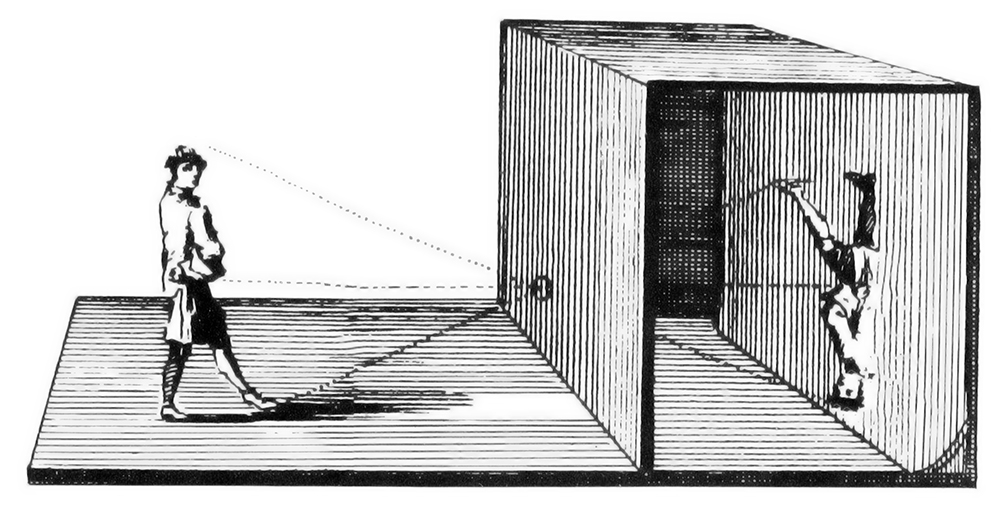
pinhole imaging
The author of "The Girl with Pearl Earrings", Johannes Vermeer (Netherlands, 1632-1675), had an exceptionally precise control over portrait expressions and light, shadow, and color. Researchers believe that he used the prototype of the camera at that time - the darkbox - to assist in artistic creation.
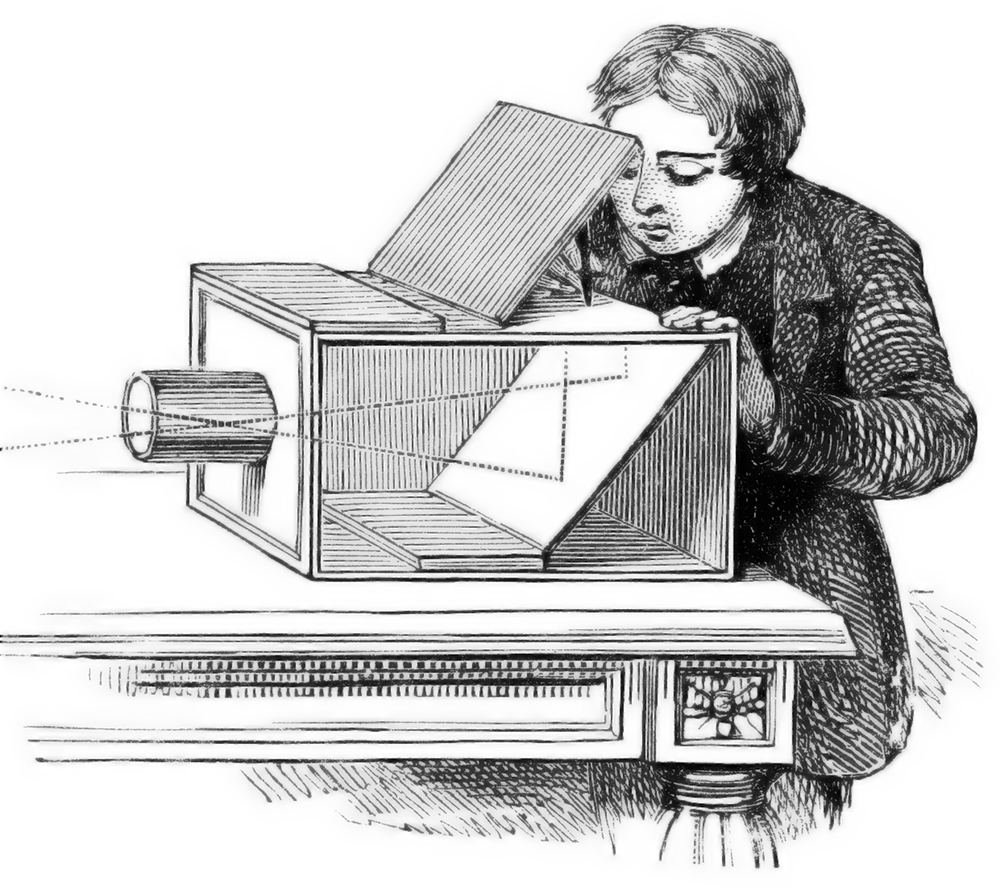
Auxiliary drawing
In 1825, Joseph Nic é phore Ni è pce (France, 1765-1833) commissioned optical instrument merchant Charles Louis Chevalier (France, 1804-1859) to produce optical lenses for his photographic cassette. In 1827, Joseph Nisseful Nepes put his invented photosensitive material (asphalt metal plate) into a cassette and shot it from the attic window in his home in the Burgundy region of France. After about 8 hours of exposure, the asphalt on the surface produced areas of different degrees of hardening according to the intensity of the light received. Then, he used petroleum and lavender oil to clean the uncured asphalt coating, presenting the first image in history. This method is called heliography. In 1898, photography historian, collector, and photographer Helmut Gernsheim (Germany, 1913-1995) exhibited the artwork "Scenery Outside Le Gras" in London. Landscape refers to land with visual and associative features, as well as the natural environment and man-made landscapes attached to it. Both China and foreign countries have different interpretations and expressions of the term 'scenery', and different concepts coexist and integrate with each other in the development of the times.

Joseph Nisseful Nieps' 'Scenery Outside the Window of Le Gras': Sunlight Etching Method
In 1834, William Henry Fox Talbot (England, 1800-1877) invented salt printing, which involves coating paper with sodium chloride and then silver nitrate, followed by exposure and fixation using potassium iodide. Through this method, he captured the window pane and field scenery outside Abbey's house (the world's earliest negative film). In 1835, he used this method to first take a negative image of an image, and then transfer the negative image onto another photosensitive material through light to obtain a positive image. This method is called the Calotype process.
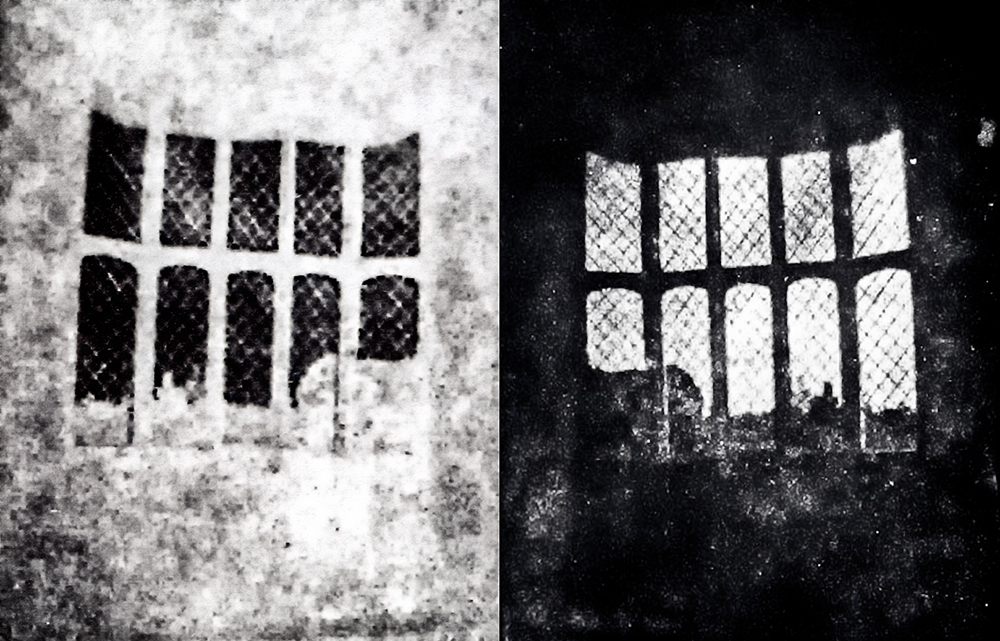
William Henry Fox Talbot's "The Abby's Window Panes and the Field View Outside the Window" Carousel Craftsmanship
In 1839, the French Academy of Sciences and Arts announced that Louis Jacques Mand Daguerre (France, 1787-1851) had obtained a photographic patent - the Daguerreotype. It is photosensitive with silver iodide, exposed for about 15 minutes, developed with mercury, fixed with salt, and the image is recorded on a flat plate. Later, silver bromide was added to silver iodide as a photosensitive material, resulting in a significant reduction in exposure time and making the popularization of photography possible.
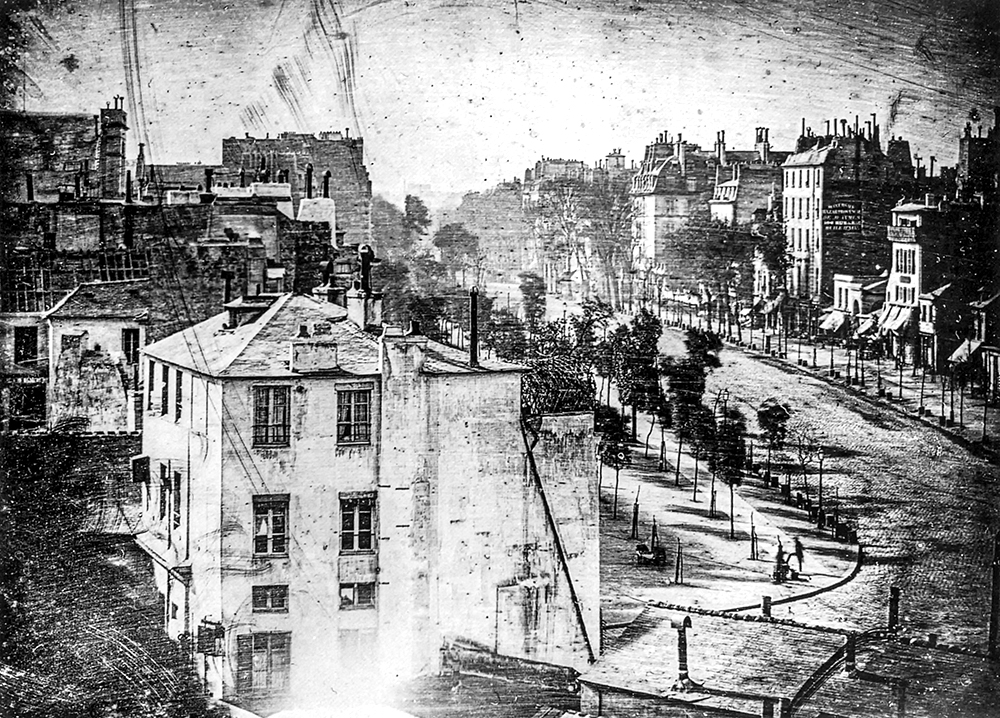
Louis Jacques Mand é Daguerre's "Monastery on the Boulevard" Daguerre Silver Plate
In 1842, John Friedrich Wilhelm Herschel (England, 1792-1871) invented the cyanotype, also known as the iron salt Prussian blue method. It is a process of coating paper with a solution containing ammonium iron citrate and potassium ferrocyanide, and then exposing it to light to transform high valent iron salts into low valent iron salts. The unconverted high valent iron salts (Fe3+) are converted into Prussian blue, while the low valent iron salts (Fe2+) are washed away to form an image. The blue light process is mostly used to replicate engineering blueprints. Anna Atkins (UK, 1799-1871) began using this method to create works in 1843. In 1842, Johann Friedrich Wilhelm Herschel also invented the Kallitotype (one of the iron silver methods), also known as the Argyrotype. The photosensitive agent for iron silver printing is iron oxalate, while the photosensitive agent for the other two processes is ammonium iron citrate. After coating a suitable paper with a solution containing iron oxalate/ammonium iron citrate (Van Dyke), silver nitrate, and tartaric acid, the photosensitive paper and negative film are exposed to ultraviolet light to convert high valent iron salts into low valent iron salts, thereby reducing silver ions (Ag1+) to metallic silver (Ag). The image is then fixed using a dilute sulfuric acid solution and finally formed. William Walker James Nicol (Scotland, 1855-1929) invented a relatively stable formula for the iron silver method (silver salt) in 1889, and Arndt and Troost improved the Caliphate photographic method in 1895 to present the brown color in Anthony Van Dyck's (Belgium, 1599-1641) paintings, naming it Van Dyke Brown. James Mark Hilliard (USA) uses techniques such as Van Dycklaw to create his works.

Anna Atkins' Blue Sun Method for British Algae
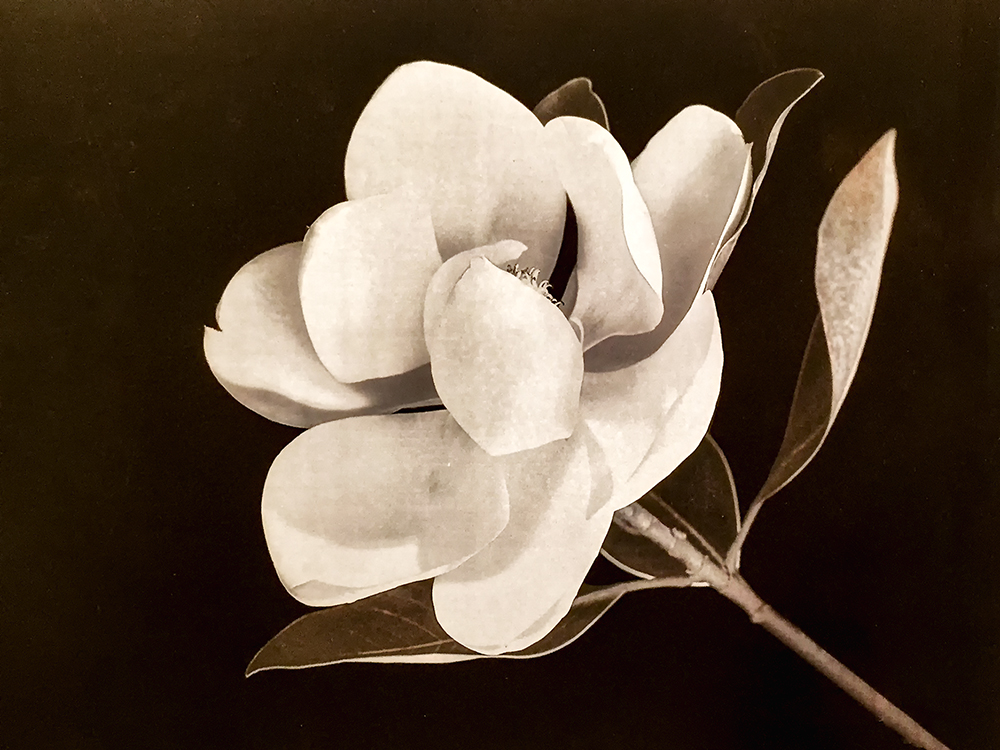
James Mark Hilliard's "Mulan" by Van Dyke (Brown)
In 1844, Zou Boqi (childhood name Ruchang, courtesy name Yie, also known as Tefu and Zhengjun, Qing Dynasty, 1819-1869), known as the "father of Chinese cameras", manufactured China's first camera. The works such as "Gezhubu" and "Record of Photographic Instruments" discussed optical principles, darkbox production, photosensitive plate manufacturing, as well as methods of photography and processing. He applied ancient Chinese pharmaceutical and chemical knowledge, integrated modern Western chemical substances (nitric acid, hydrochloric acid, acetic acid, and high solubility alcohol), and successfully developed photoreceptors (mainly egg whites, salt, rosin charcoal, deer antler juice, silver powder, and other raw materials), developing agents, fixing solutions, and invented the wet slide method.

Zou Boqi's "Selfie" Wet Slide Method
In 1847, Abel Niepce de Saint Victor (France, 1805-1870) invented the Albumen Process. Coat a layer of egg white containing potassium bromide and potassium iodide on glass, dry it, immerse it in a mixture of silver nitrate and acetic acid, and then expose it appropriately. During development, alternately rinse with gallic acid and silver nitrate solution to obtain the desired tone, and then fix it with thiosulfate. In 1850, Louis D é sir é Blanquart Evrard (France, 1802-1872) discovered that adding chloride to egg whites could produce detailed and highly contrasting prints, and introduced Albumen Printing. He also published John Stewart's (Scotland, 1814-1887) Pyrenees mountain scenery and Auguste Salzmann's (France, 1824-1872) Jerusalem scenery. In 1908, the Neue Photographers Gesellschaft (Germany, 1894-1948) issued a patent for Casein Printing. By decomposing protein in milk with ammonia to produce a gelatinous substance, and adding pigments and potassium dichromate, exposure to light will harden the cheese protein in thinner areas of the film, while areas with less exposure will be washed away. Christina Z. Anderson (born 1957 in the United States) focuses on the research and printing of this photography technique.
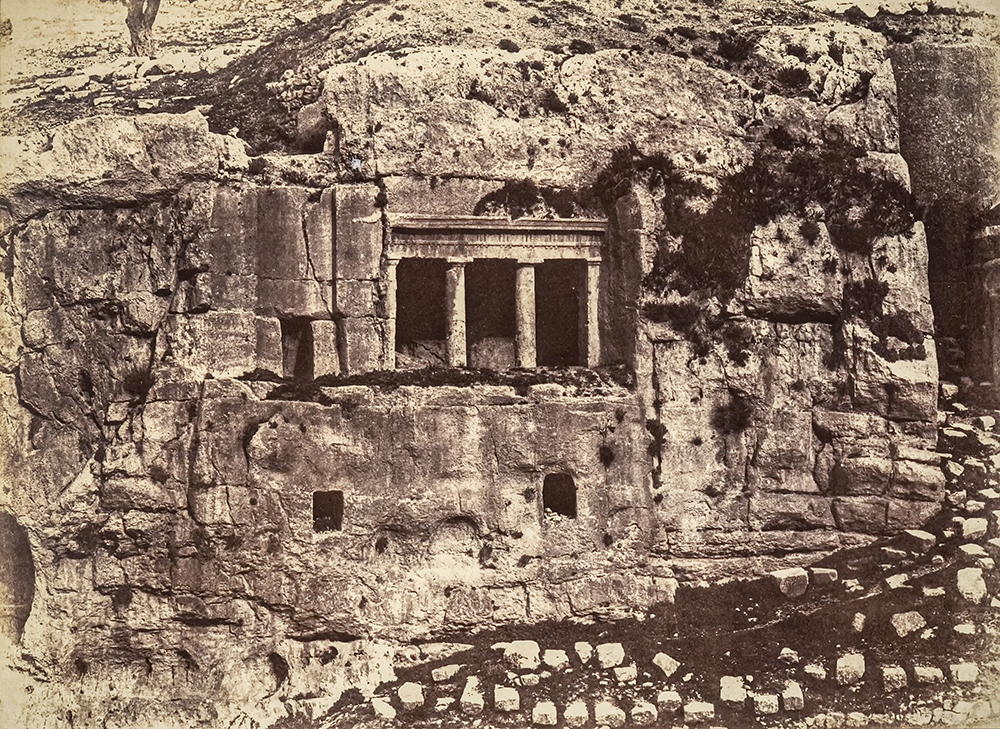
Auguste Saltzman's "Tomb of St. James" Protein Craftsmanship
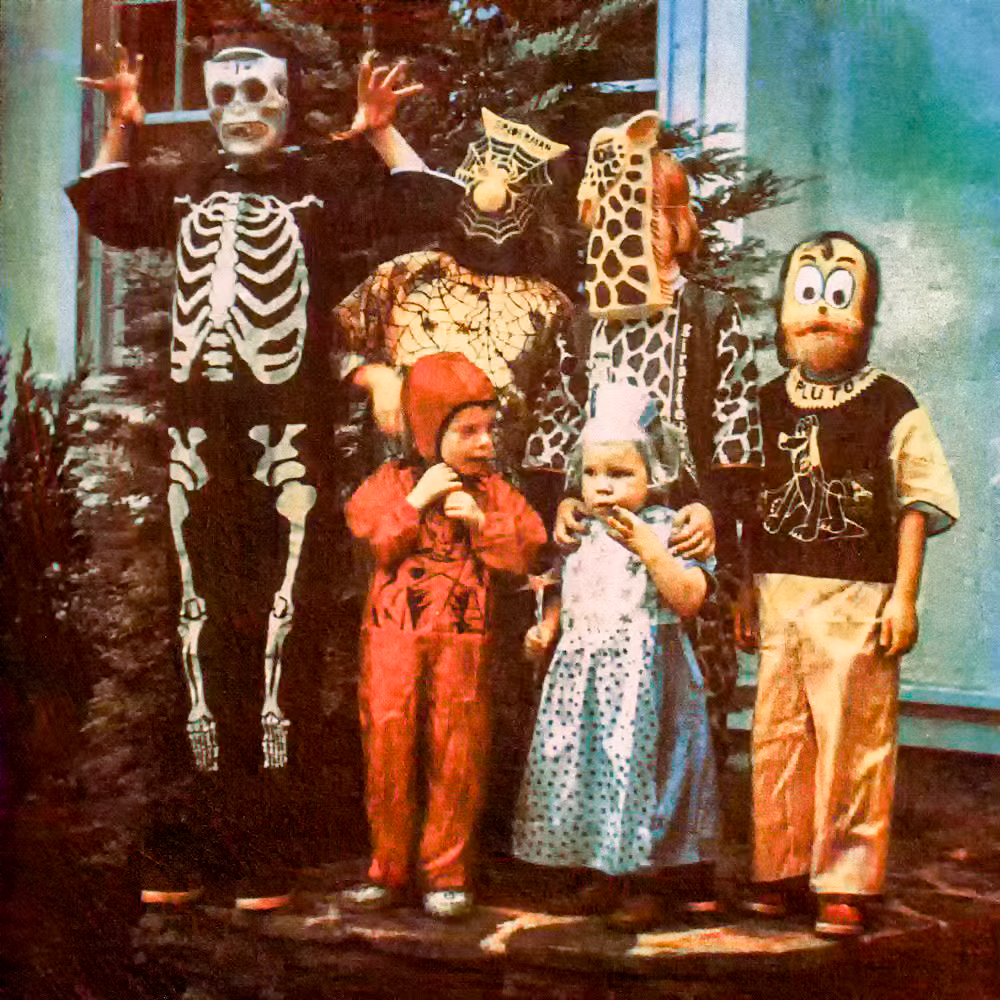
Kristina Z. Anderson's Halloween Cheese Protein Print
In 1851, sculptor and photographer Fredrick Scott Archer (1813-1857, UK) invented Wet Plate Processing, also known as Wet Plate Collodion, which involves coating a glass surface with a solvent mainly composed of Fire Plate Collodion, immersing it in a silver nitrate solution, and taking photos while it is wet, followed by development and fixation (sodium thiosulfate).

Frederick Scott Archer's "Kenilworth Castle" Wet Plate Craftsmanship
In 1852, building upon William Henry Fox Talbot's discovery that gelatin treated with dichromate hardens and becomes insoluble in water upon exposure to light, Alphonse-Louis Poitevin (French, 1819-1882) utilized this principle to create the Carbon Printing process in 1855. This technique involved coating paper with a mixture of carbon black or other pigments in dichromated gelatin. This coated paper was then exposed to light in contact with a negative. The exposure caused the gelatin to harden to varying degrees and densities depending on the light received. The unhardened areas were subsequently washed away. Since the mid-tone areas only had their surface gelatin hardened, leaving the underlying layers soft, they were susceptible to being washed out entirely from bottom to top. To counter this, papers with more pronounced surface textures were used to enhance the adhesion of the gelatin to the base. Alternatively, the Carbon Transfer method was employed, where the gelatin layer was moistened and transferred to another sheet of paper. This process reversed the layers, making the originally hard, exposed surface (now in contact with the new paper support) soft and soluble, while the formerly soft underside became the hardened, final image surface, resulting in a relief-like photograph.In 1868, Louis Ducos du Hauron (French, 1837-1920) pioneered colour photography by incorporating pigments into the carbon process, creating the Colour Carbon process. The following year, in his published work Les Couleurs en Photographie, solution du problème, he detailed the principles of both additive and subtractive colour methods and demonstrated their practical application, achieving photographs with remarkably high colour fidelity.By the late 20th century, Calvin Grier (American) advanced the process further, progressing from using inkjet negatives for "single transfer" prints to creating triple-transfer colour images that moved beyond basic CMYK colour separations.
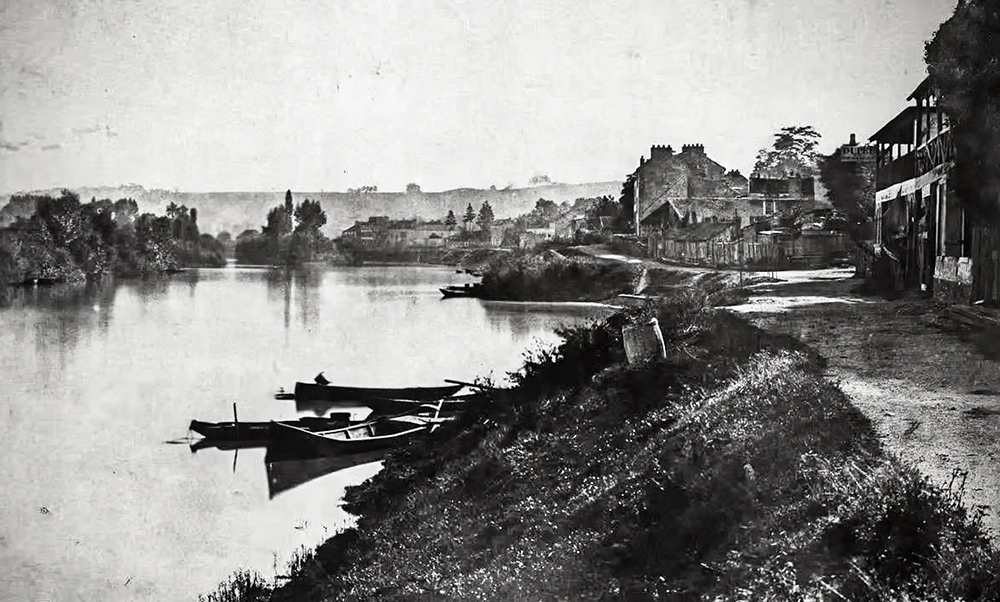
Alphonse Louis Boettwy's "The Seine River in Meudon" carbon print
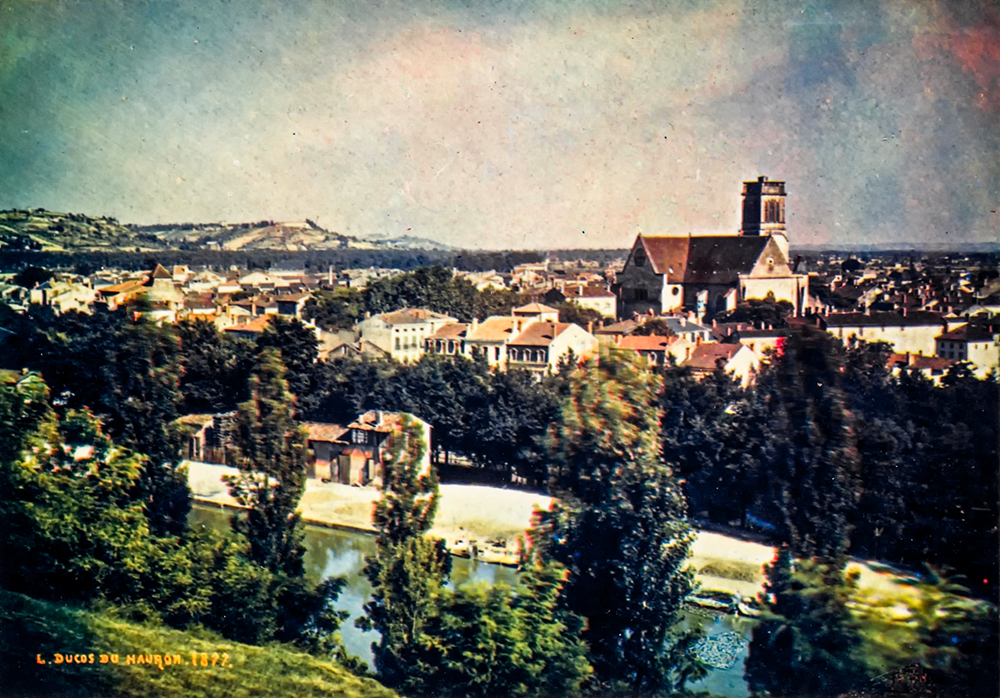
Louis Arthur Dukos Douolon's "Scenery of Valjean" Color Carbon Craftsmanship
In 1858, John Pouncy (UK, 1818-1894) invented the Gum Bichromate print, also known as the Dichromated Colloid process. The process involves mixing dichromate with colored Arabic gum (Acacia tree sap extract) and coating it onto a piece of paper. The negative film is then exposed to light, causing the gum to harden and wash away the uncured gum, resulting in the final image. Due to the softness and lack of intermediate tones in the images produced by this technique, it was not until the late 19th century that its effect was valued by art photography. In 1894, Robert Demachy (France, 1859-1936) began researching and using colored resin dichromate printing technology, and held the first exhibition of resin dichromate technology at the Paris Photography Club in 1895. At the end of the 20th century, Keith Taylor (USA) achieved high quality and color consistency in tri color offset printing.
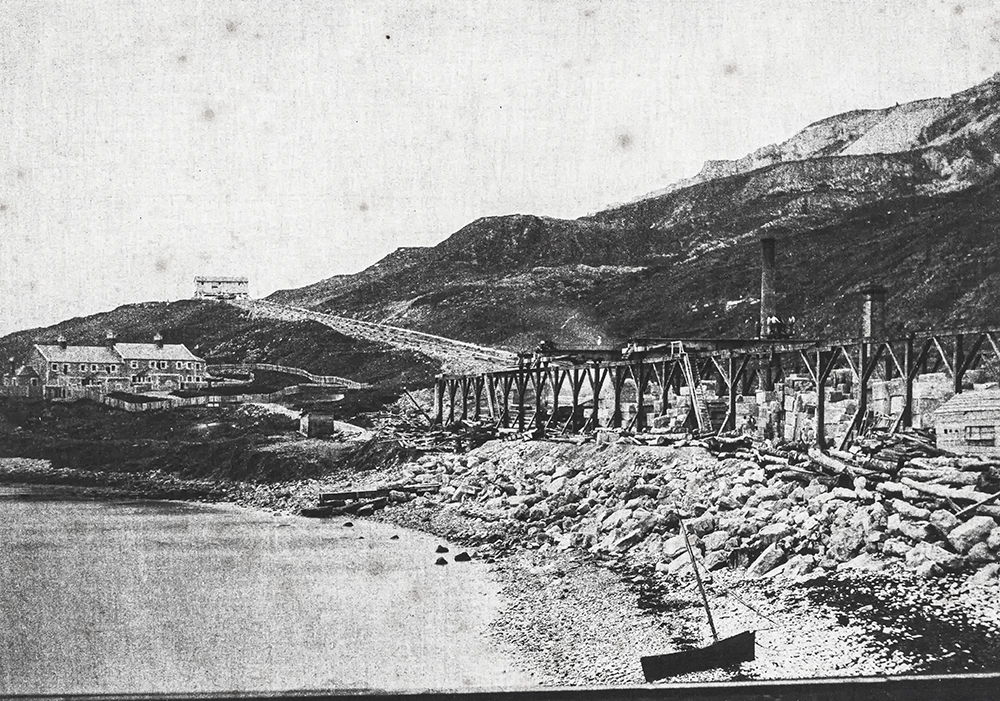
John Poncy's "The Wall Under Construction Near the Coast" is printed with resin dichromate
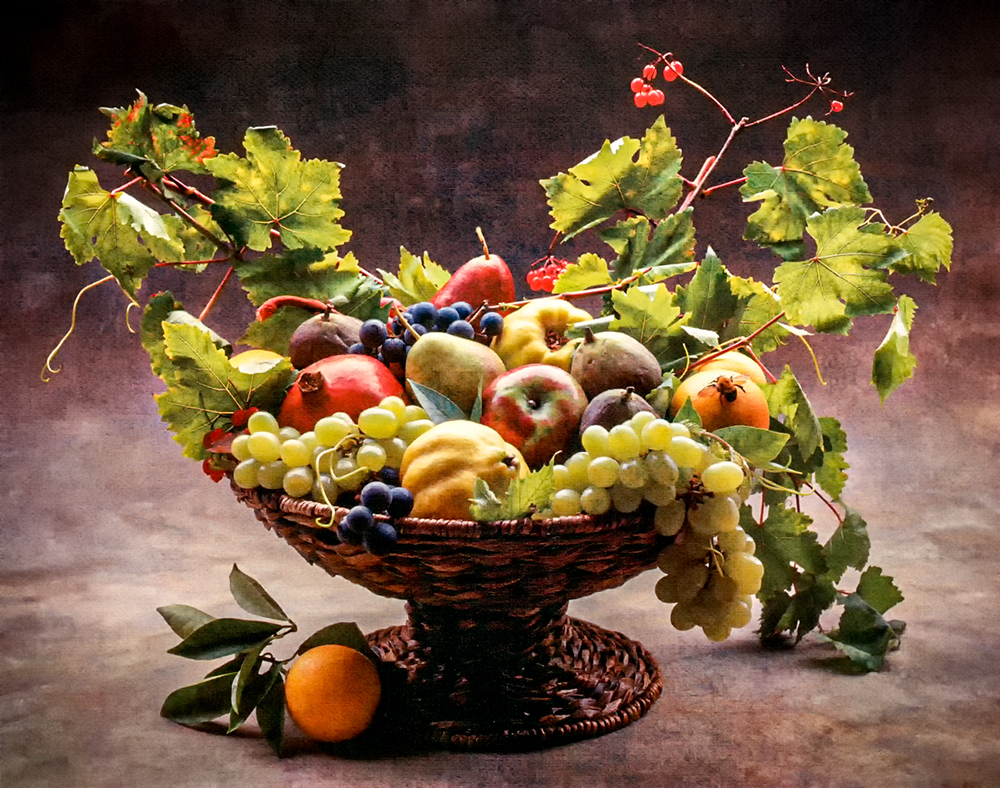
Keith Taylor's "Harvest" Color Gum Dichromate Printing
In 1864, Walter Bentley Woodbury (1834-1885, UK) invented the Woodbury type intaglio printing method. It is made using unstained dichromate gelatin to create undulating textures on the surface, which is then hardened and pressed onto a lead plate to form a gravure lead mold. Colored gelatin is used as printing ink, and this lead plate is used for batch printing. Finally, the finished product is polished, cut, and mounted. Later, the photopolymer gravure method was developed, in which an emulsion sensitive to ultraviolet light was coated on a photopolymer metal plate (photopolymer plate). The metal plate was exposed under a negative film, and the unexposed components on the metal plate were washed off. The metal plate was then coated with ink and printed on paper using a gravure printing machine.

Walter Bentley Woodbury's "Treasures from Around the World" Woodbury gravure printing method
In 1869, Joseph Albert (Germany, 1825-1886) was also influenced by William Henry Fox Talbot's proposal that gelatin treated with dichromate would harden and be insoluble in water after exposure, and invented the Collotype method. It is based on a glass plate and made into gelatin hardened graphics and text according to the layers of the original manuscript. The wrinkles hardened by gelatin absorb ink, and the uncured parts are printed by wetting and repelling ink. The collections and paintings of museums such as the Forbidden City in Beijing, Shanghai, Tianjin, Liaoning, etc. are mostly printed using this technology. In 1874, Joseph Albert made his first successful attempt to produce colored collotuses.
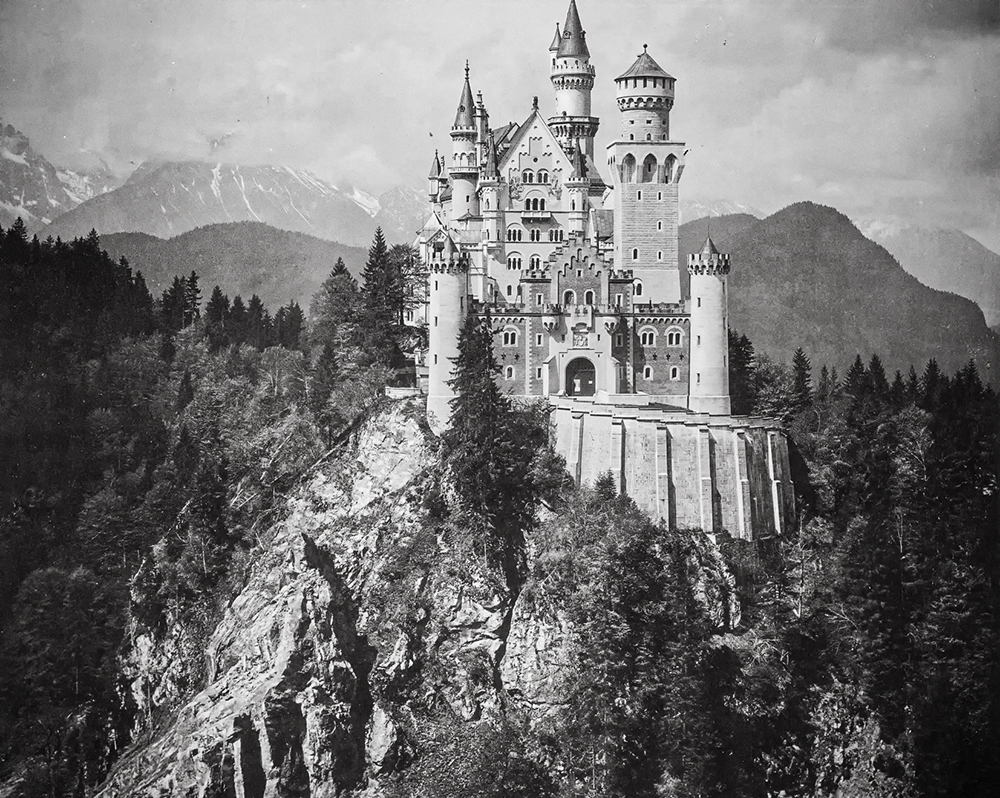
Joseph Albert's "Neuschwanstein Castle" using the Corolla version

Albertype Company (1887-1952) printed postcards titled "Balkentina, Italy" using colored colro printing method
In 1873, the photochemist Hermann Wilhelm Vogel (Germany, 1834-1898) attempted to add a small amount of aniline dye to the formulated emulsion, solving the problem of photosensitive agents being sensitive to blue, purple, and ultraviolet light, and only slightly sensitive to green light, truly bringing color photography into practical applications. He invented the negative color photosensitive technology in 1874, which had an impact on many developments in color photography and color printing. In the 1890s, Herman William Vogel's son assisted William Kurtz (1833-1904, USA) in applying dye sensitization and trichrome photography techniques to halftone printing, which allowed the primary colors to reach an incompletely saturated state. The small dots of each primary color were printed in sufficiently small patterns, allowing each color to continuously change and ultimately producing a full-color image.
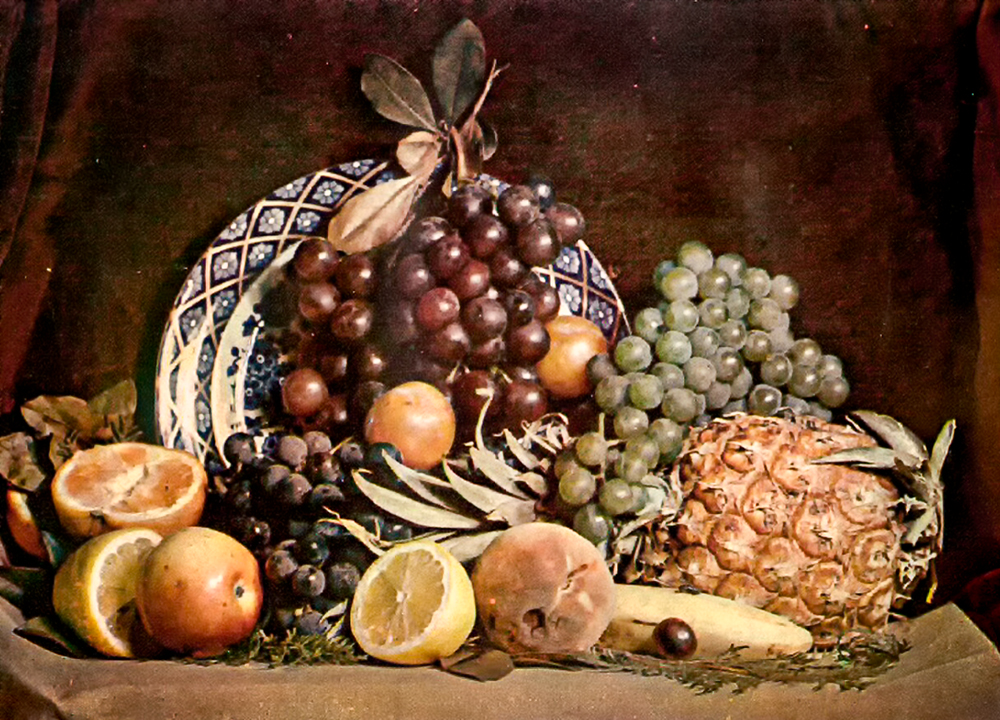
William Kurtz's Half tone Printing of 'Fruit'
In 1873, William Wills Jr. (1841-1923, UK) invented the platinum or palladium print, which used a photosensitive material that was not platinum or palladium salts, but iron salts. Apply a solution of mixed iron salt (Fe3+), oxalic acid, and potassium chloroplatinate (sodium tetrachloropalladate) onto suitable paper. Under illumination, the high valent iron salt is transformed into a low valent iron salt, thereby reducing the platinum/palladium compound (Pt2+/Pd2+) to platinum/palladium atoms (Pt/Pd). Use potassium oxalate to enhance the developed image, rinse with dilute hydrochloric acid, and finally thoroughly wash with water. Because platinum and palladium have high corrosion and oxidation resistance, theoretically they can be stored for a long time. In 1886, Peter Henry Emerson (UK, 1856-1936) published "Life and Scenery in the Norfolk Lake District", advocating for the use of photography similar to "naturalism" to clearly document rural life.

Peter Henry Emerson's "Picking Water Lilies" Platinum Print
In 1879, Karl Klietsch (Czech Republic, 1841-1926) invented the Copperplate Photogravure method. Polish the copper plate smooth, then attach the exposed carbon paper (dichromate) for etching (ferric chloride) to produce high-quality intaglio. The different depths of the etching units determine the color tone of the printed image, with darker units accommodating more ink (resulting in darker printing colors), while lighter units may not accommodate ink at all.
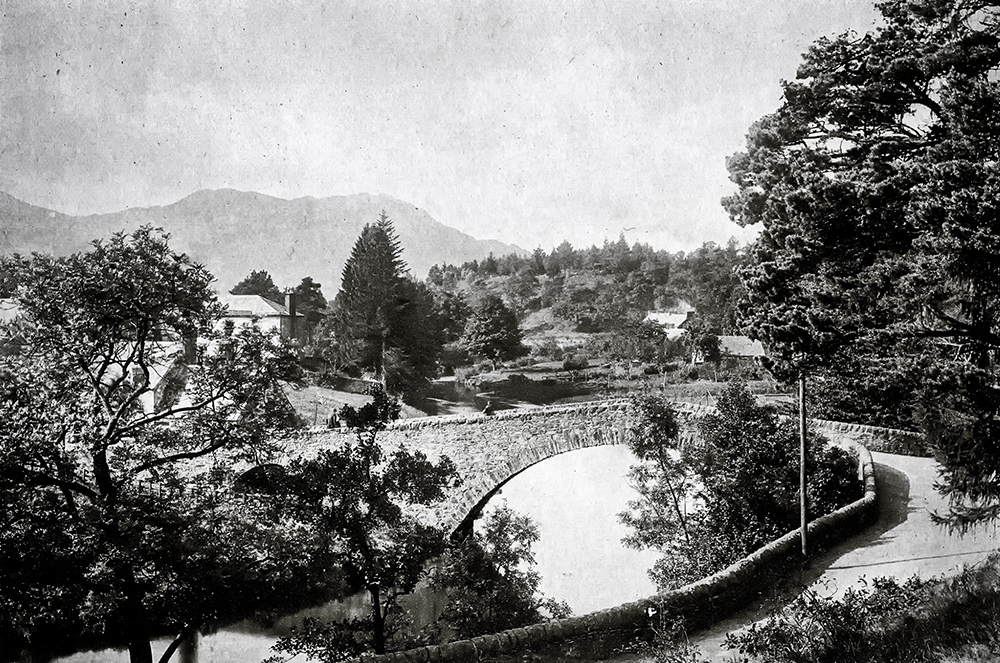
Karel V á clav Klitsch's "Stone Bridge" Bronze intaglio method
In 1897, Johann Paul Eduard Liesegang (Germany, 1838-1896) invented the gelatin etching method (mordan ç age), also known as bleach etch/etch bleach, gelatin relief, reverse relief, etc. The mixed solution of copper salt and acid bleach and dissolve the silver on the black and white silver salt photographic paper, and the dark areas on the photographic paper are oxidized by ammonium persulfate (later hydrogen peroxide) to form a wavy texture. In the 1960s, Jean Pierre Sudre (France, 1921-1997) created the recipe we use today, and his disciple Elizabeth Opalenik (USA, 1947-) created the pattern now known as the "drape effect".
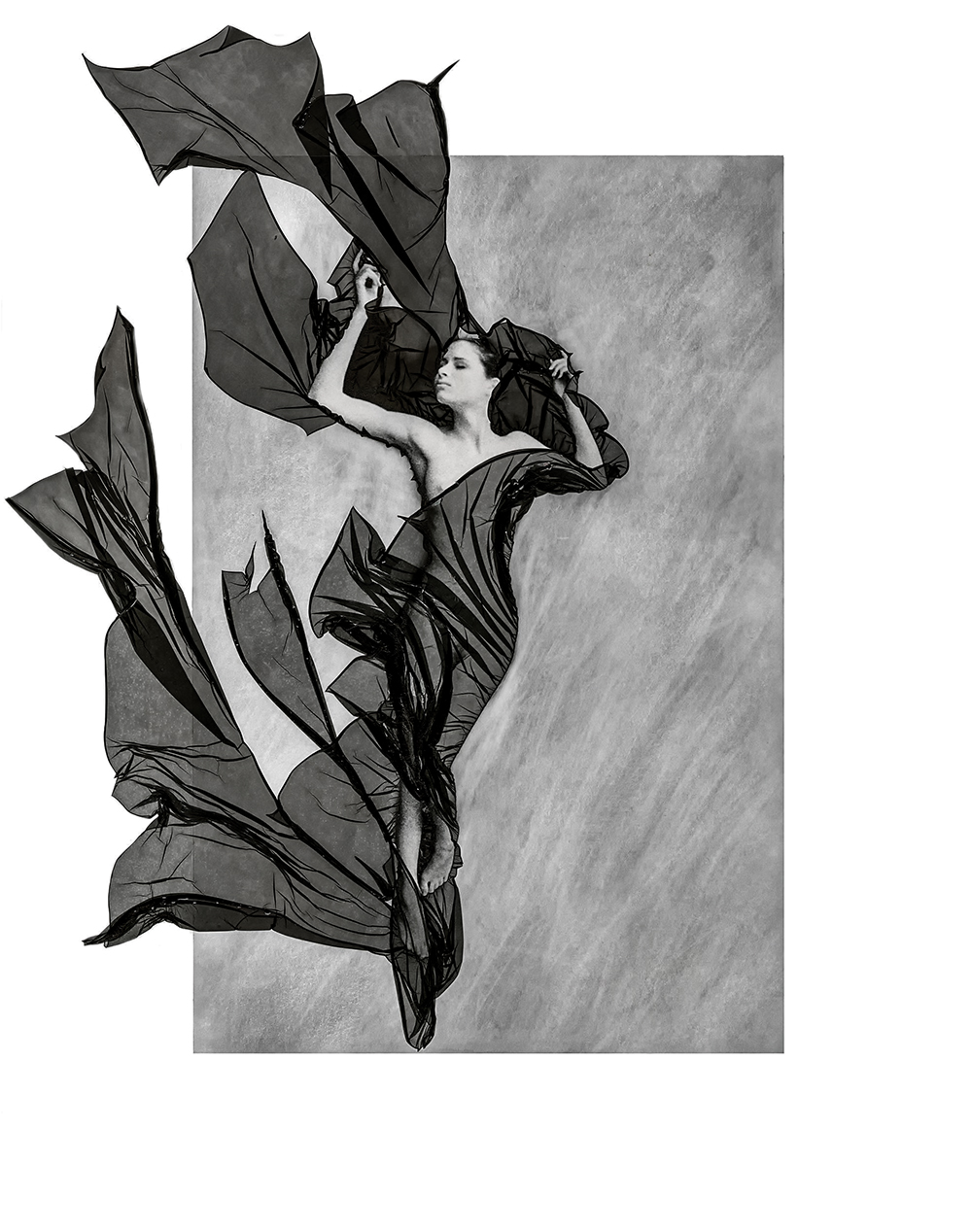
Elizabeth Opalenik's "Santa Fe" gelatin etching method
In 1907, Edward John Wall (UK, 1860-1928) invented the Bromoils theory, also known as the Rawlins Oil Process, based on the theory of silver bromide ink. Its predecessor was Oil Pigment Printing. In the same year, C. Welborne Piper (UK) developed an operational procedure that involved developing, fixing, and washing gelatin silver salt magnifying paper. The paper was then bleached with copper sulfate and potassium bromide solutions, tanned with potassium bromide and potassium dichromate solutions, and finally coated with ink on the photographic paper. The ink adhered to the hardened gelatin area, and the gelatin area that expanded with water repelled the ink, ultimately forming an image. É mile Joachim Constant Puyo (France, 1857-1933), as a major advocate of the French art movement, adopted this technique as a medium of creation. In the 1930s, Franz Rontag (Austria, 1897-1980) took three films using blue, green, and red filters. The blue filter was painted yellow, the green filter was painted red, and the red filter was painted blue. The ink on the three photos was then transferred to new paper, resulting in a color image. Randolph Bezzant Holmes (New Zealand, 1888-1973) used colored silver bromide ink for printing while filming the border between India and Afghanistan.
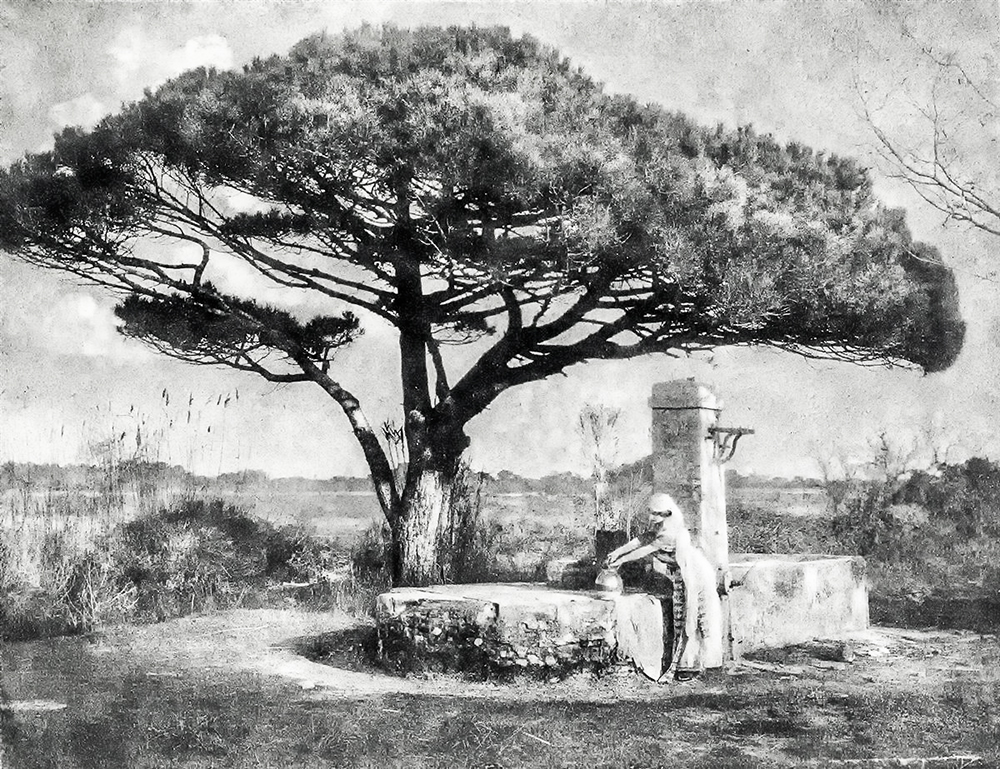
Emil Joachim Konstant Puyo's "Woman by the Well" using silver bromide ink method
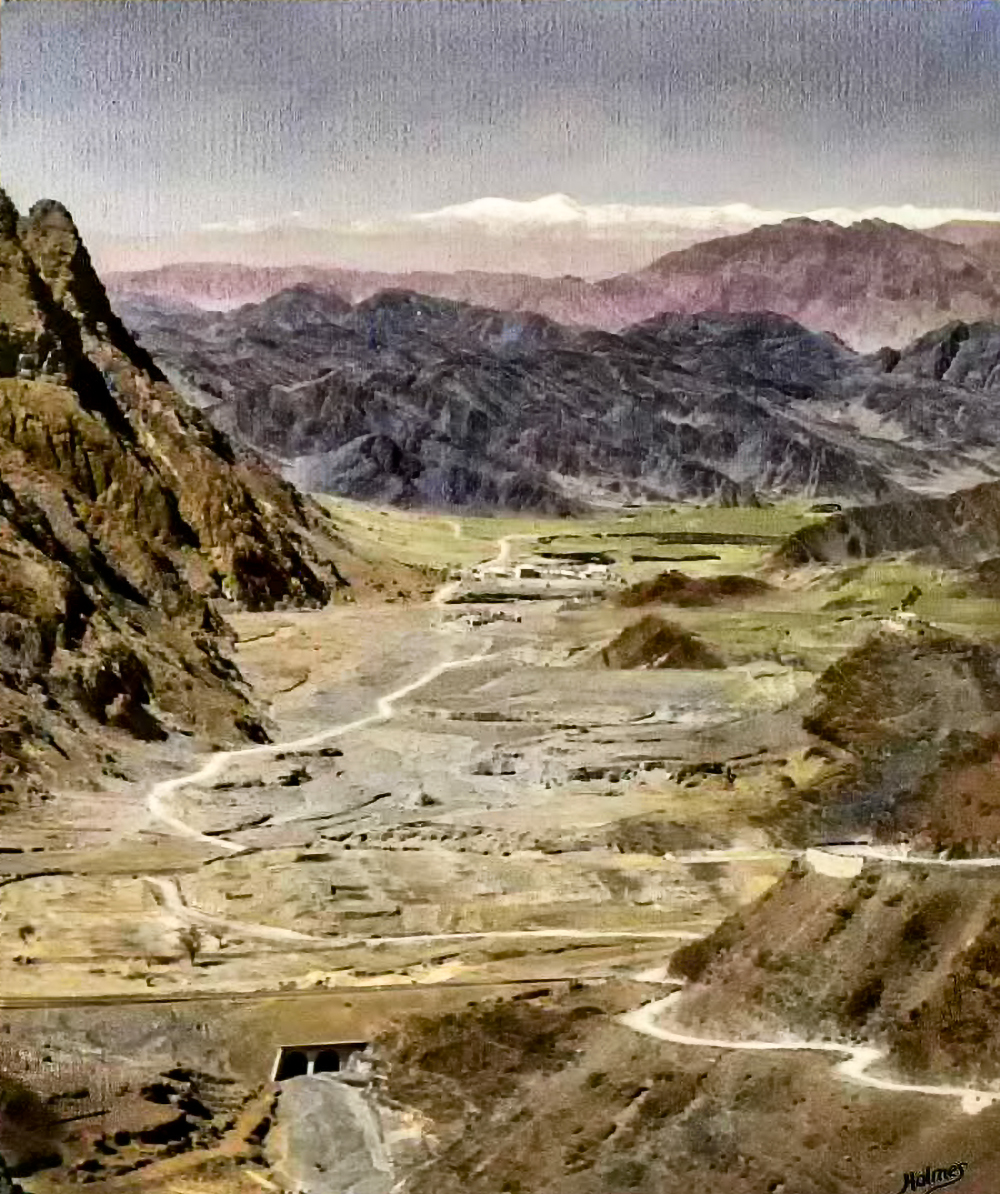
Randolph Bezent Holmes' "Ali Mosque Canyon in Khyber Pass" using colored silver bromide ink method
In 1907, Auguste Lumi è re (France, 1862-1954) and his brother Louis Lumi è re (France, 1864-1948) developed the Autochrome method. They applied two layers of potato starch granules composed of red, green, and violet on a glass plate, and added silver halide emulsion and carbon powder in the middle to achieve color positive film sensitivity. After exposure, the transparent film was specially washed to record image products resembling pointillism paintings. L é on Gimpel (France, 1873-1948) modified the negatives with the help of colleagues and produced "instant" color photographs.
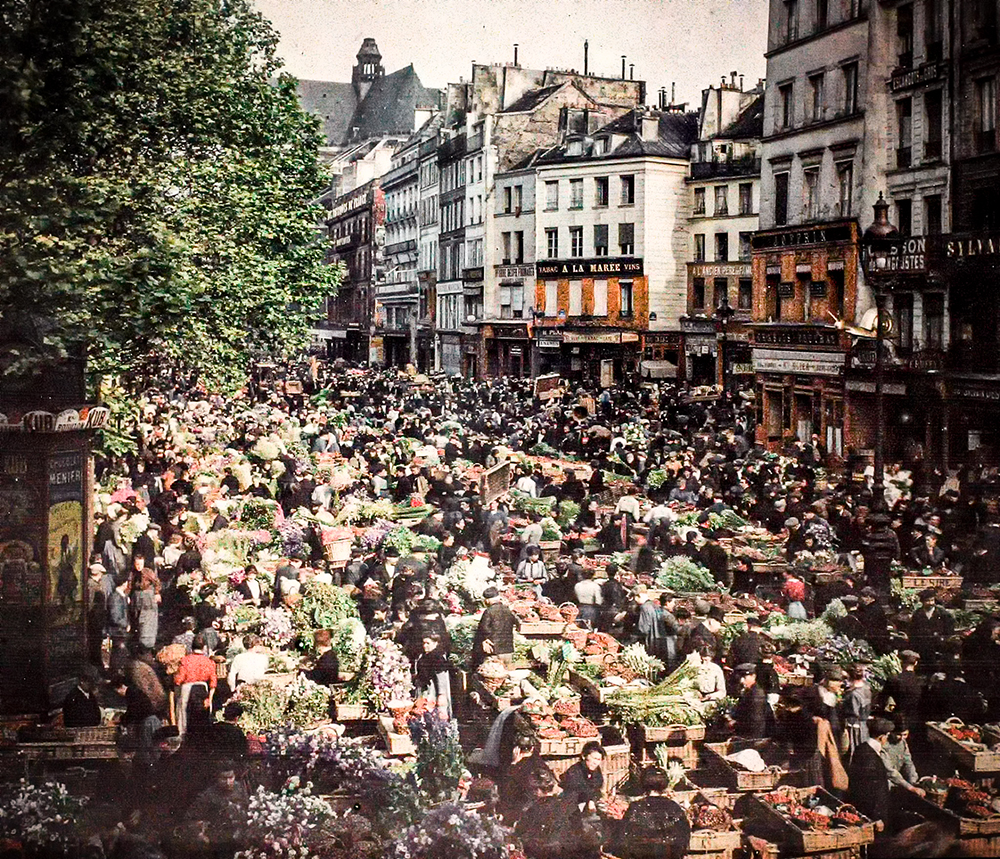
Leon Gimpel's "Open Markets" by Otto Krom
In 1917, under the rise of New Objectivity (represented by Albert Renger Patzsch (Germany, 1897-1966) and Paul Strand (United States, 1890-1976), Alfred Stieglitz (United States, 1864-1946), the father of modern photography in the United States, proposed "direct photography" in an attempt to explore the mechanical nature of photography, advocating the use of natural methods to avoid artificiality. Photographers gradually shifted from imitating painting photography to capturing natural environments, and landscape photography gradually emerged.
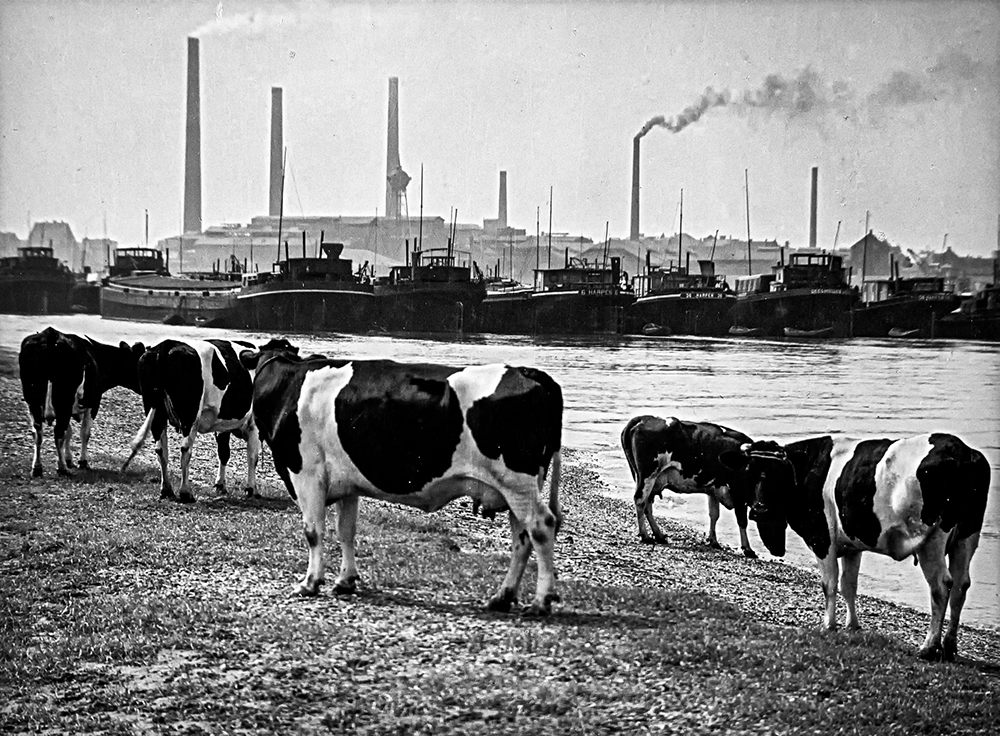
Albert Lengel Patch's "Cows at the Mouth of the Ruhr River"
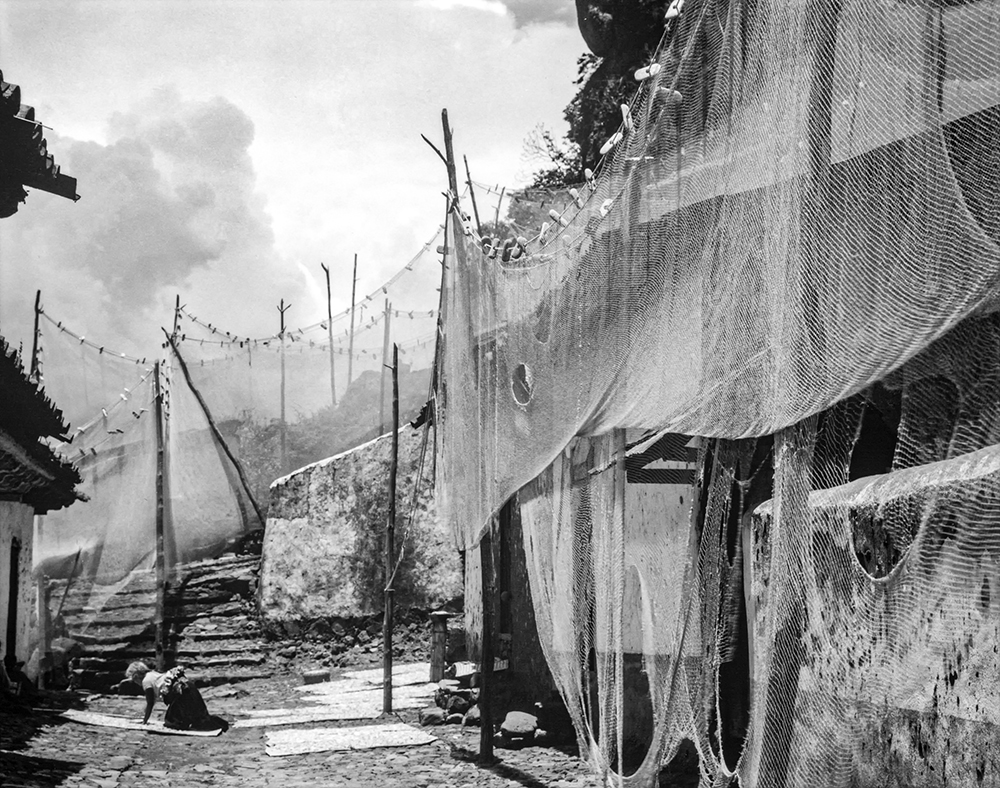
Paul Strand's "The Nets"
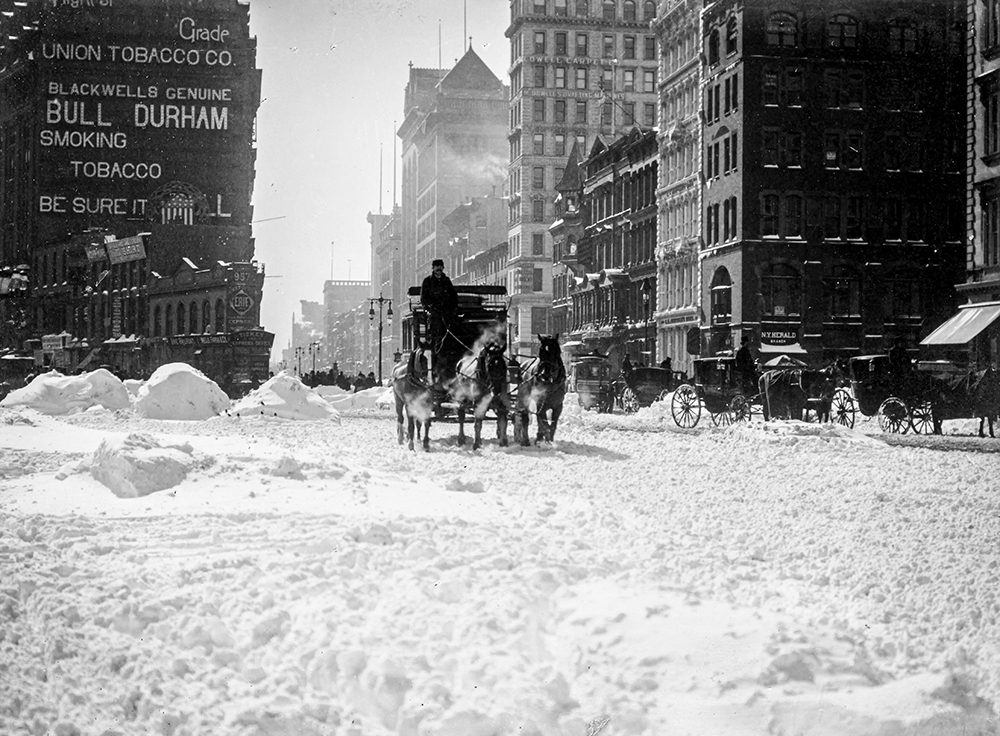
Alfred Stieglitz's "Winter in New York"
In 1935, the Great Depression in the United States was the peak of Walker Evans' (1903-1975) creative career. His works no longer expressed artificial elegance and beauty, but rather a genuine and simple portrayal of the current state of the times. Evans' photography philosophy, along with his critical attitude, permeates every aspect of society from the upper class to the lower classes through his lens, giving birth to an extremely clear, cold, and unadorned style of photography.
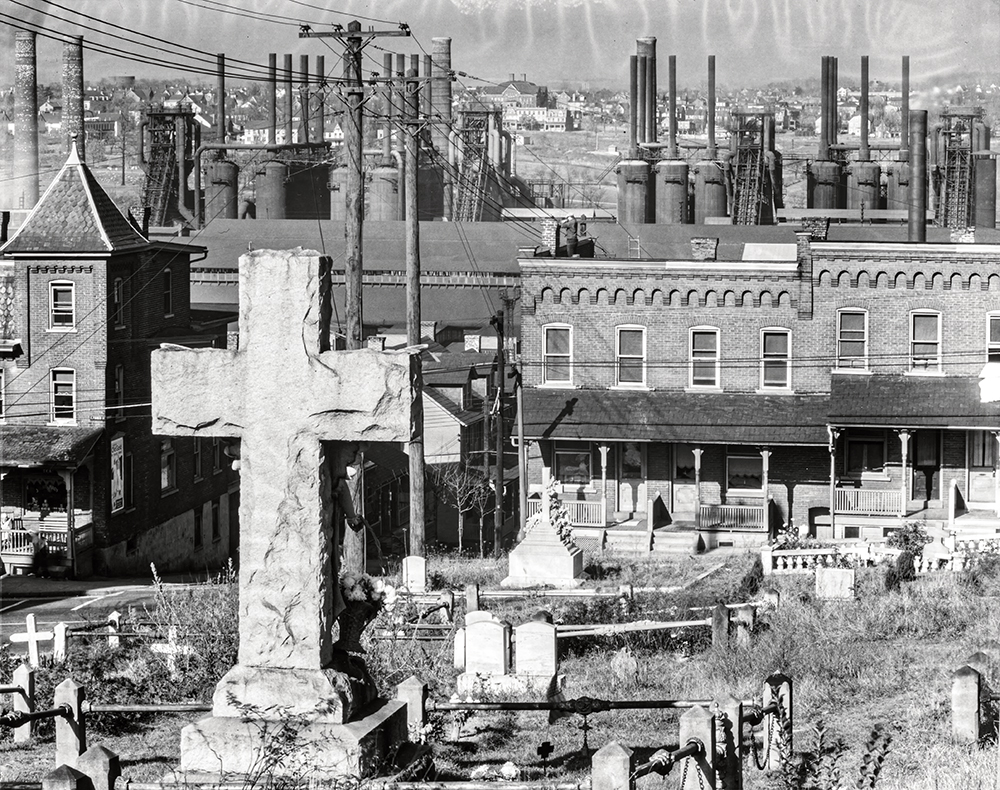
Walker Evans' Cemetery, House, and Steel Plant '
In 1955, Robert Frank (1924-2019) (awarded the Guggenheim Foundation in 1955) began filming "The Americans". In a country that does not belong to oneself, as an outsider and voyeur, low-key captures the tense relationship between the geographical, economic, racial, and religious diversity of the United States, and presents an American landscape that is incompatible with the persistence of optimism that often appears in American post-war self-awareness.

Robert Frank's' Public Parks'
In 1965, William Eggleston (USA, 1939-), a pioneer of New Color Photography (awarded the Guggenheim Foundation in 1974), began experimenting with color photography. He expresses new and old, mediocre and extraordinary, artificial and natural through color. The work focuses on details such as objects or facial expressions, or depicts the entire scene to break through the boundaries of Walker Evans and Robert Frank's documentary photography style, documenting the transition of the southern United States from rural to suburban society.
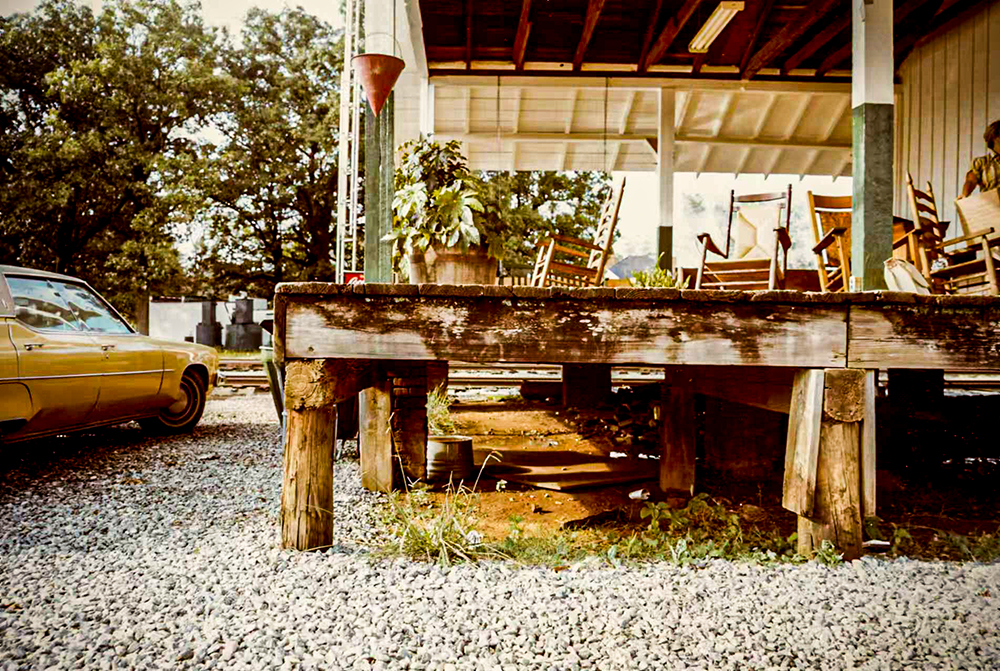
William Eggleston's "Plains City Railway Station in Georgia"
In 1966, photographer and educator Nathan Lyons (1930-2016) held an exhibition titled "Contemporary Photographers: Landscape Towards Society" at the George Eastman Museum in the United States. He added the adjective "social" before "landscape" in an attempt to expand the connotation of "landscape", separate it from the natural and man-made environment itself, and extend the relationship between people and these "landscapes", namely "new landscape". Five photographers, Garry Winogrand (USA, 1928-1984), Duane Michals (USA, 1932-), Bruce Davidson (USA, 1933-), Lee Friedlander (USA, 1934-), and Danny Lyon (USA, 1942-), participated in the exhibition.
Gary Winogrand (awarded the Guggenheim Foundation in 1964, 1969, and 1979, and the National Endowment for the Arts in 1975) often uses wide-angle lenses to capture meaningful scenes in life with casual and perfunctory compositions, creating a bizarre visual tension and constructing dynamic and restless visual effects from a dynamic angle.

Gary Winogrand's "San Marcos, Texas"
Duane Michaels (awarded the National Endowment for the Arts in 1976) achieved two innovations in the field of art photography: one was to tell a story through a series of photos, and the other was to handwrite text next to the photos to convey information that the images themselves could not convey.
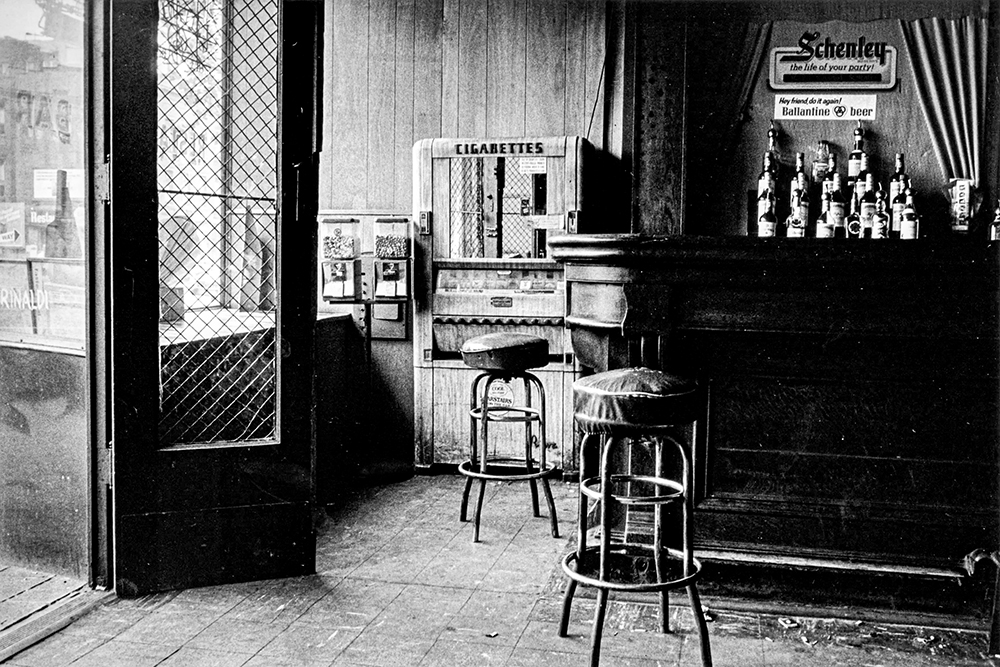
Duane Michaels' 'Some Invisible Things'
Bruce Davidson (awarded the Guggenheim Foundation in 1961 and the National Endowment for the Arts in 1967/1982) is regarded as a model of "New Journalism" photography for his long-term interaction and mutual trust with his subjects. Based on authentic documentary content, using subjective and personal perspectives as media, and featuring non mainstream cultural groups. John Sackowski, director of the photography department at the Museum of Modern Art, wrote, "Few contemporary photographers can present such plain observations to us like Bruce Davidson - so devoid of obvious technique or artificiality. In his works, formal and technical issues are hidden beneath the surface
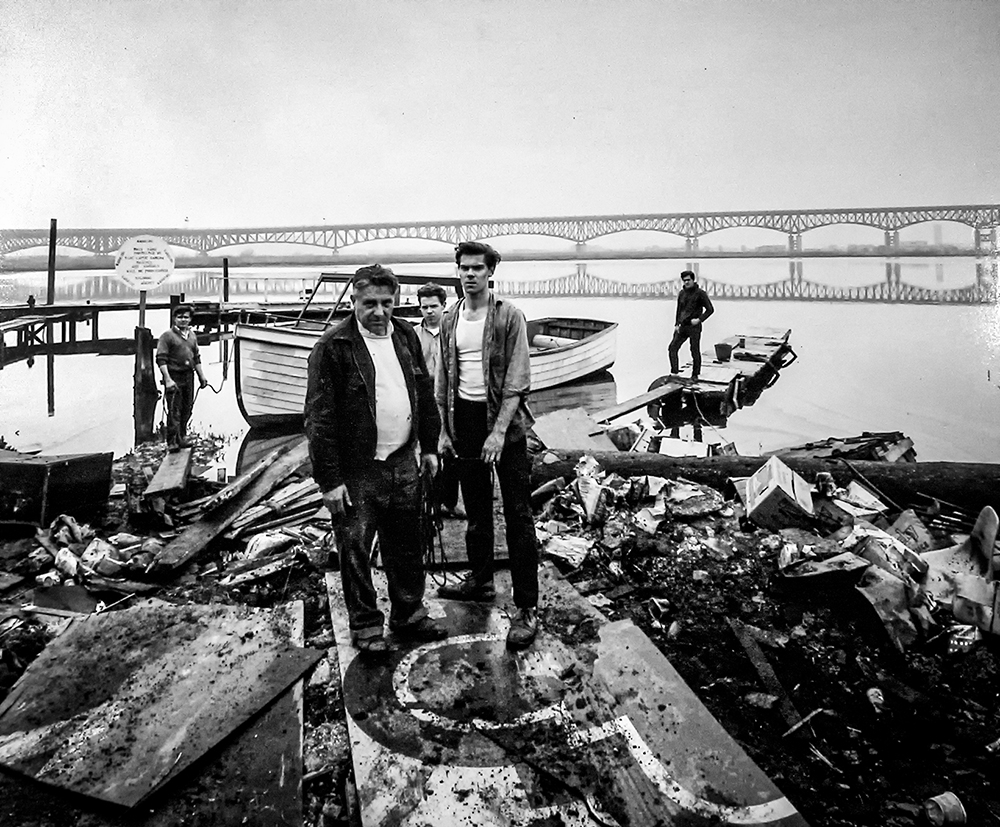
Bruce Davidson's' Jersey Meadows'
Li Friedlander (awarded the Guggenheim Foundation in 1960, 1962, and 1977) earned pocket money through photography at the age of 14, influenced by Eugene Argette, Walker Evans, and Robert Frank. He shoots artificial landscapes of the city, aiming to grasp the relationship between people and society, and between people and nature from the existence and relationship between people and things in the city. Peter Galassi, the director of the Museum of Modern Art in New York (USA, 1955-), said, "He was able to find a regular and perfect shooting angle in front of seemingly chaotic and irregular scenes, and through the comparison of light and shadow, near and far visual effects, present photos of daily life style.
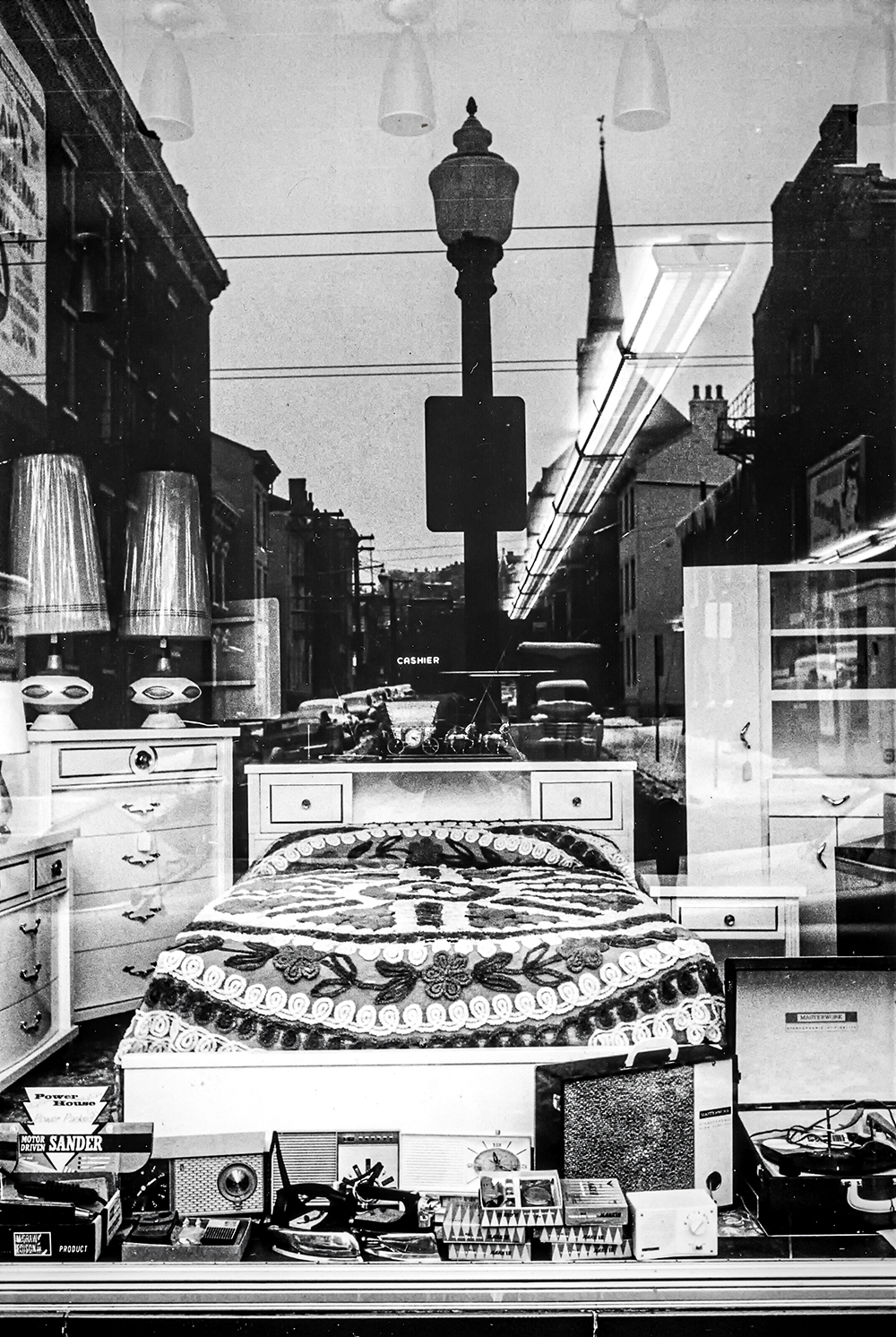
Lee Friedlander's "Cincinnati"
Danny Lyon (awarded the Guggenheim Foundation in 1969/1978) documented the road culture and lifestyle of young people in the United States, with a close relationship to the "motorcycle rebel" group. His works depict the young people's pursuit of freedom and rebellious emotions.
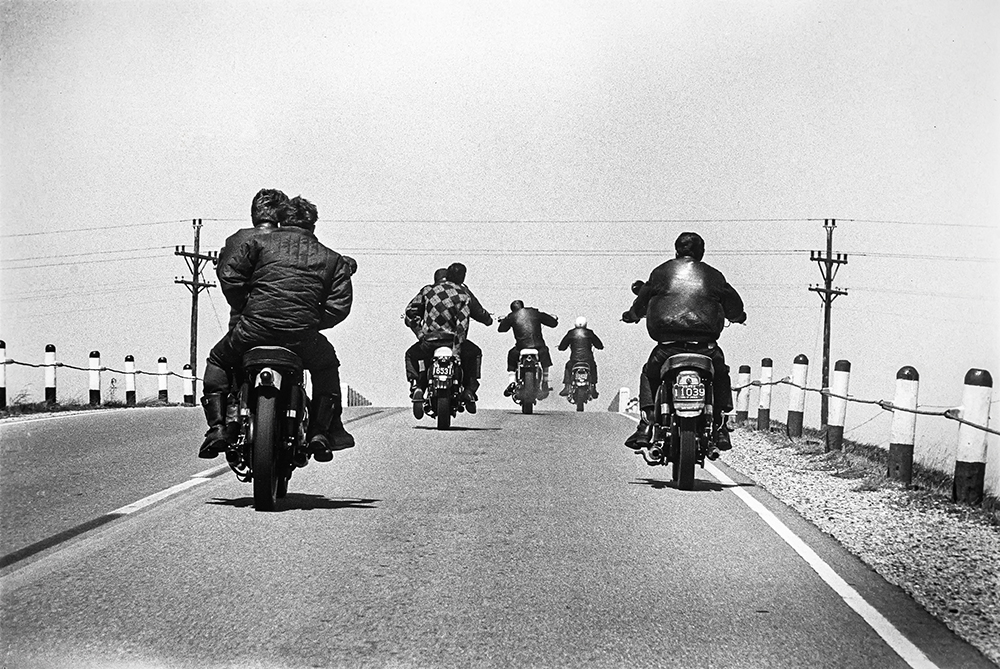
Danny Lyon's "Wisconsin Route 12"
In 1967, photography critic and curator John Szarkowski (1925-2007) held an exhibition titled "New Documents" at the Museum of Modern Art in New York, USA. Presenting personalized landscapes: familiar, fragmented, humorous, encountered, overlapping, distant, ambiguous, bizarre... full of metaphorical colors. Images are no longer just providing evidence for society, but have become a bridge to explore human nature and integrate into life, thus evolving the way of photography from "taking pictures" to "making pictures". Diane Arbus (USA, 1923-), Gary Winogrand, and Lee Friedlander, three photographers, participated in the exhibition.
Dean Arbus studied under Berenice Abbott (1898-1991) (who used black and white photography to depict the streets and buildings of New York), and received the Guggenheim Foundation in 1963/1966. The work involves marginalized groups and sensitive themes such as strippers, carnival performers, nudists, and dwarfism patients. She once said, "Nothing is ever what ordinary people are familiar with. What I want to show is the incredible side of familiar things, and the familiar side of incredible things
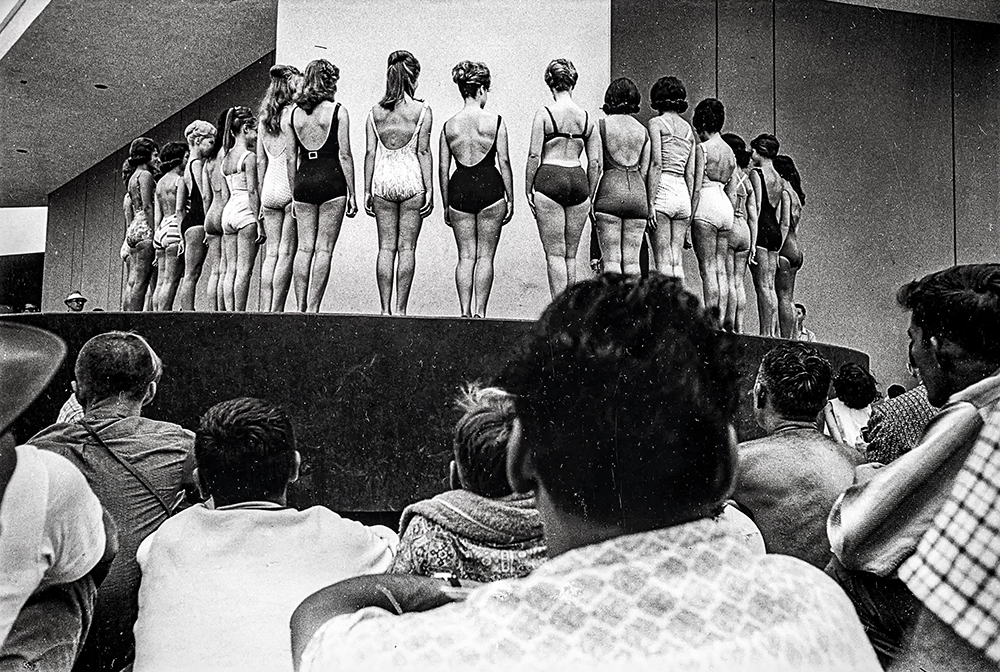
Dean Arbus' Miss Surfing Beauty Pageant '
In 1975, William Jenkins (USA, 1944-) held an exhibition titled "Extended Literature: A Study of Information and Evidence in Photos" at the Eastman House in the United States. The main purpose of the exhibition is to explore the significance of documentary photographs. In the same year and place, William Jenkins held an exhibition titled "New Topographies: Photos of Artificially Modified Landscapes". These stylized realism works have become a blank sheet of paper, and over time, viewers will have different understandings and interpretations of the relationship between human activities and nature. It provided references for the 1977 – 1979 re exploration program in the United States (tracking locations in 19th century American Western historical survey photos and comparing new photos with existing ones) and the 1981 revival of the public observation program in the United Kingdom (documenting the daily lives of British people in various public places). Bernd Becher (Germany, 1931-2007) and Hilla Becher (Germany, 1934-2015), Robert Adams (United States, 1937-), Frank Gohlke (United States, 1942-), Henry Wessel Jr. (United States, 1942-2018), John Schott (United States, 1944-), Lewis Baltz (United States, 1945-2014), Joe Deal (United States, 1947-2010), Nicholas Nixon (United States, 1947-), Stephen Schott (United States, 1947-) Stephen Shore, USA, 1947-10 photographers participated in the exhibition.
Bernd B é chet and Hila B é chet are the founders of the Dusseldorf School of Photography. When the United States experienced the impact of new documentary, new terrain, and traditional aesthetics, France advocated for caring photography (the hatred of war prompted photographers to warn the world by recording wars and conflicts), and Britain focused on social issues, Bernd B é chet and Chirac B é chet drew on the tradition of Charles Marvelle (France, 1813-1879) in photographing architecture and systematically recorded industrial relics in the Western world.

Bourne Bechet and Hillary Bechet's "Coal Crusher"
Robert Adams (awarded the National Endowment for the Arts in 1973/1978 and the Guggenheim Foundation in 1973/1980) was influenced by Timothy O'Sullivan (1840-1882), Carleton Watkins (1829-1916), Ansel Easton Adams (1902-1984), and Edward Weston (1886-1958). At that time, he was caught between the snapshot aesthetics of the 1950s and 1960s and the objective aesthetics of the 1970s, as well as between black and white and color photography. His subjects shifted from urban streets to broader rural towns, laying a solid foundation for large-scale color documentaries in the 1970s. The work 'Prairie' had a profound impact on Alec Soth (USA, 1969-).
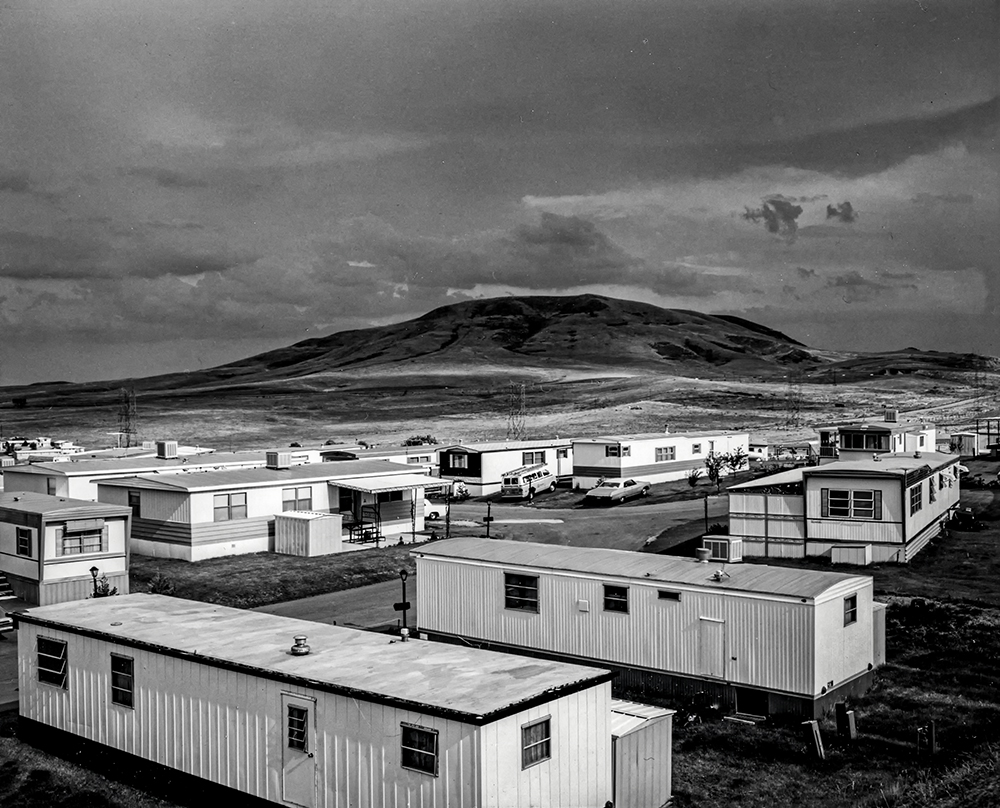
Robert Adams' Mobile House '
Frank Gerrke (awarded the National Endowment for the Arts in 1977/1986 and the Guggenheim Foundation in 1975/1984) continuously focuses on landscapes in a state of change, attempting to depict the relationship between people and their surroundings by capturing geographical features and meteorological environments.
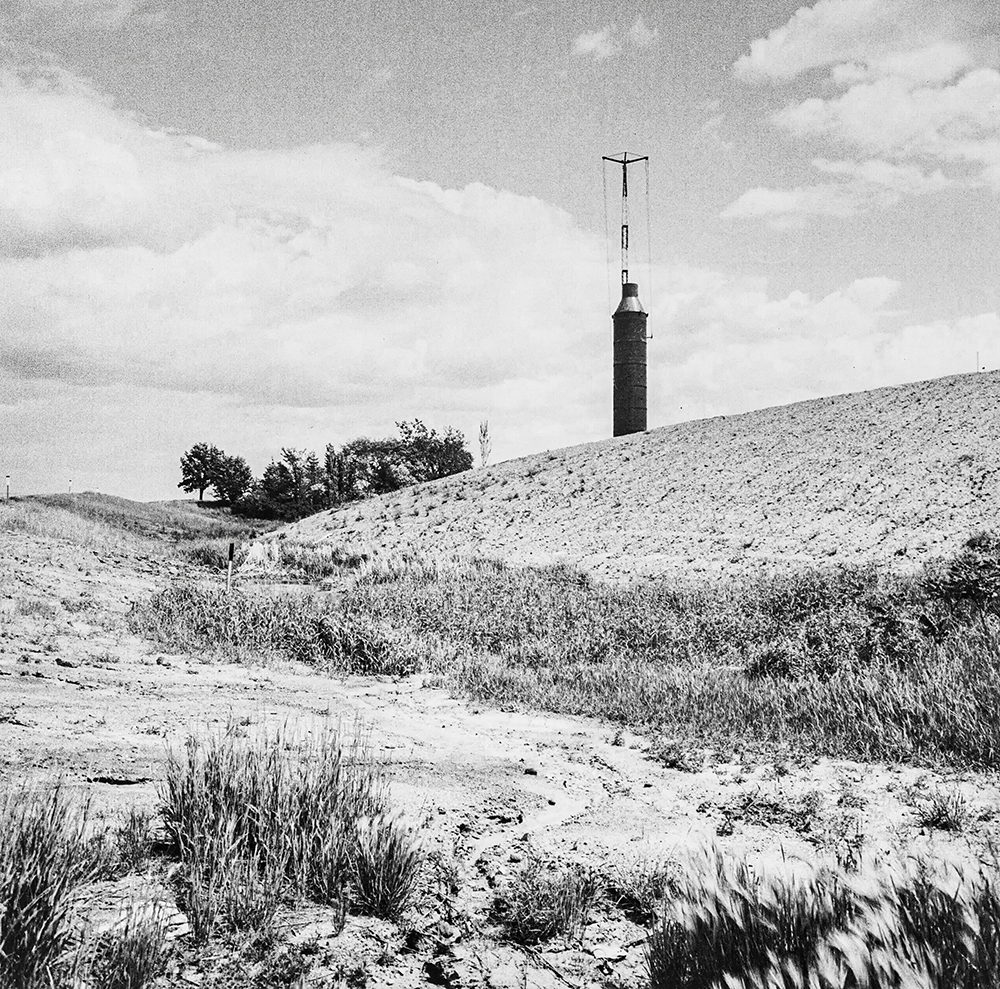
Frank Gerke's' Water Tower Under Construction '
Henry Wiesel Jr. (awarded the National Endowment for the Arts in 1975, 1977, and 1978, and the Guggenheim Foundation in 1971/1978) conducted extremely concise and satirical photographs of rural scenes in the American West.
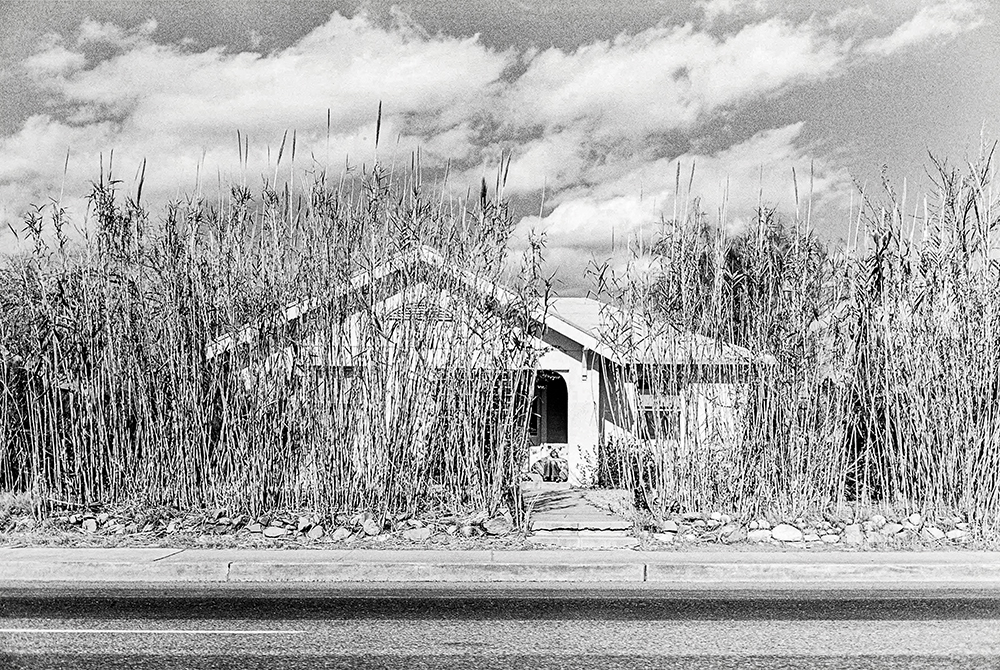
Henry Wessel Jr., Tucson, Arizona
John Short (awarded the National Endowment for the Arts in 1975) was attracted to the scenery and houses of the American West. The westward pioneers constantly changed the environment of the West through these houses, and he inspired people's memories of their hometown by capturing these images.

John Short's "Route 66 Motel"
Lewis Barthes (awarded the National Endowment for the Arts in 1973/1977 and the Guggenheim Foundation in 1977) broke through the Western landscape photography tradition represented by Timothy O'Sullivan, Carlton Watkins, and William Henry Jackson (1843-1942) in his images of suburban and industrial park landscapes in the 19th century. His works presented a romantic or transcendentalist style (advocating that people can understand truth through intuition beyond sensation and reason). In the late 1980s, he shifted from conventional scale black and white photographs to large-scale color photographs to reflect on a world surrounded by science, technology, and power.
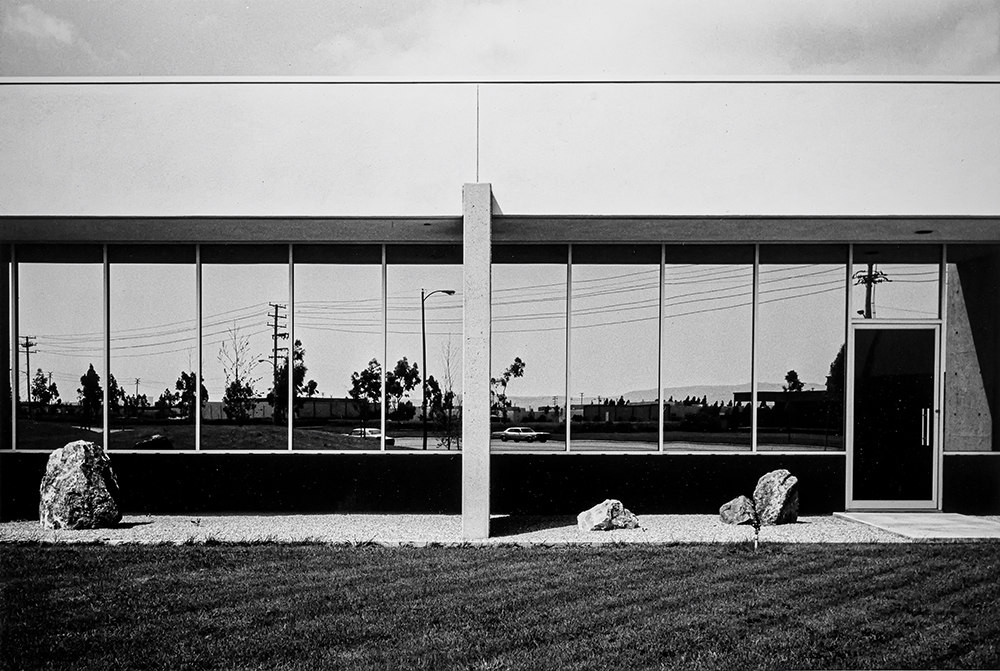
Lewis Bartz's' Mazda Motor Company South Wall '
Joe Dill (awarded the National Endowment for the Arts in 1976/1980 and the Guggenheim Foundation in 1983) depicts the impact of human activities on the natural environment of the desolate landscape of the southwestern United States.
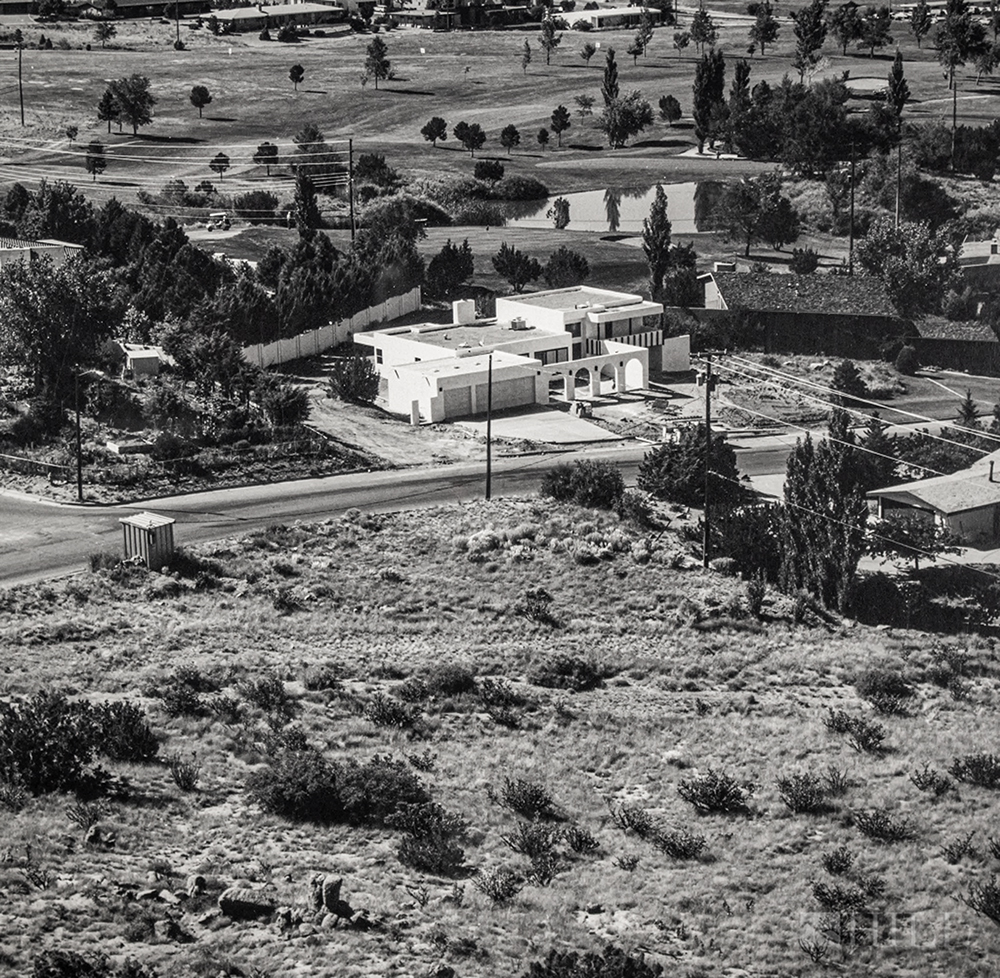
Joe Dill's' House Surrounded by Desert Plants'
Nicholas Nixon (awarded the National Endowment for the Arts in 1976, 1980, and 1987, and the Guggenheim Foundation in 1977/1986) was influenced by Edward Weston and Walker Evans and insisted on using large format cameras. He meticulously recorded the details of the subject, attempting to establish a connection between the viewer and the subject.

Nicholas Nixon's' Boston Commercial Wharf '
Stephen Shore (awarded the National Endowment for the Arts in 1974 and the Guggenheim Foundation in 1975) began taking and developing photographs at the age of six. With the rise of conceptual and pop art in New York, he was fortunate enough to meet Andy Warhol (1928-1987). In 1972, he departed from New York and traveled along Route 66 to the Midwest, capturing ordinary things and reflecting the true face of American culture, portraying the "colors of the times" and earning the title of "New Master of Color Photography".

Stephen Shore's "Presidio, Texas"
In the mid to late 1990s, with the intensification of industrialization and urbanization in China, photographers realized that their environment had undergone tremendous changes. After absorbing cutting-edge Western photography concepts and techniques, they began to constantly explore and present new meanings and forms of landscape expression.
Mo Yi (1958-) randomly, quickly, and mechanically took city slices, seemingly indifferent, but precisely reflecting on the rapid development of the times. His photography is based on the artistic expression of behavioral concepts. Through continuous self exploration, he not only unties personal knots, but also unintentionally unlocks the constraints of photography.
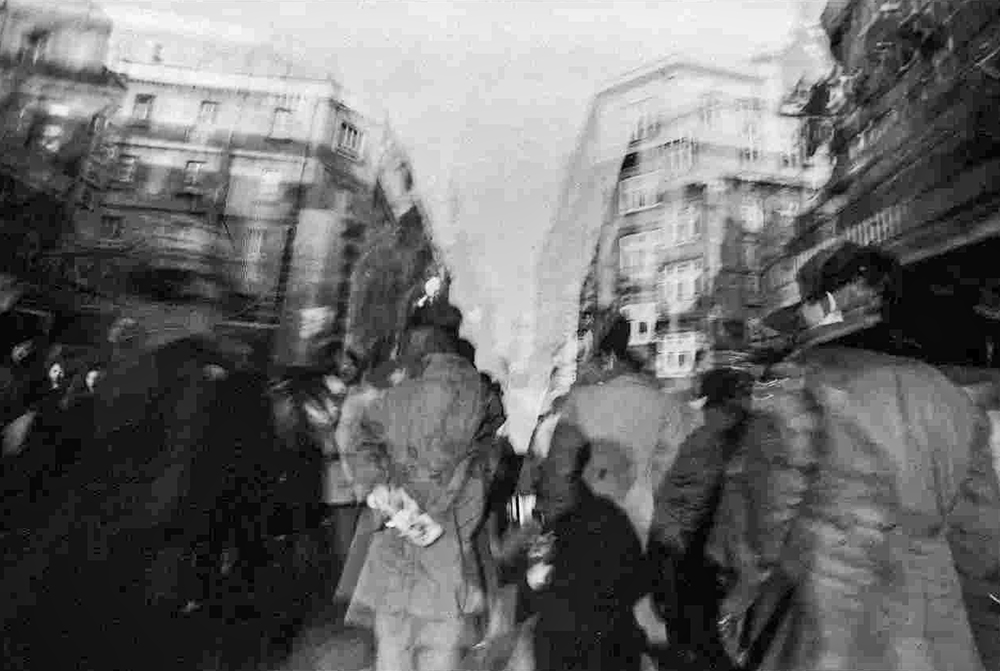
My Illusory City ", 1987
The works of Qu Zhihang (1959-) are derived from major events and have a profound social significance as they have a reciprocal impact on reality. He does not passively wait for academic and social recognition, but actively raises criticisms and questions to society through his works, triggers thinking, and seeks solutions to promote social progress.

The Moment "from 2000 to present
Luo Yongjin (1960-) established a visual connection between reality and imagery, guiding viewers to break free from conventional judgments, face impermanence, and strengthen their understanding of life. Thus, not only does it showcase the form of architecture, but it also reflects issues such as human alienation, worship of power, and interpersonal indifference in the process of modernization.

Lotus Community "from 1998 to 2002
Hou Jianhua (1966-) combined classical printing techniques such as platinum, blue sun, and carbon transfer with modern digital technology to form a unique artistic expression. He focuses on the transition between old and new in the process of urbanization, showcasing its speed and intensity, guiding viewers to think about the cultural, social, and historical issues involved in this process.
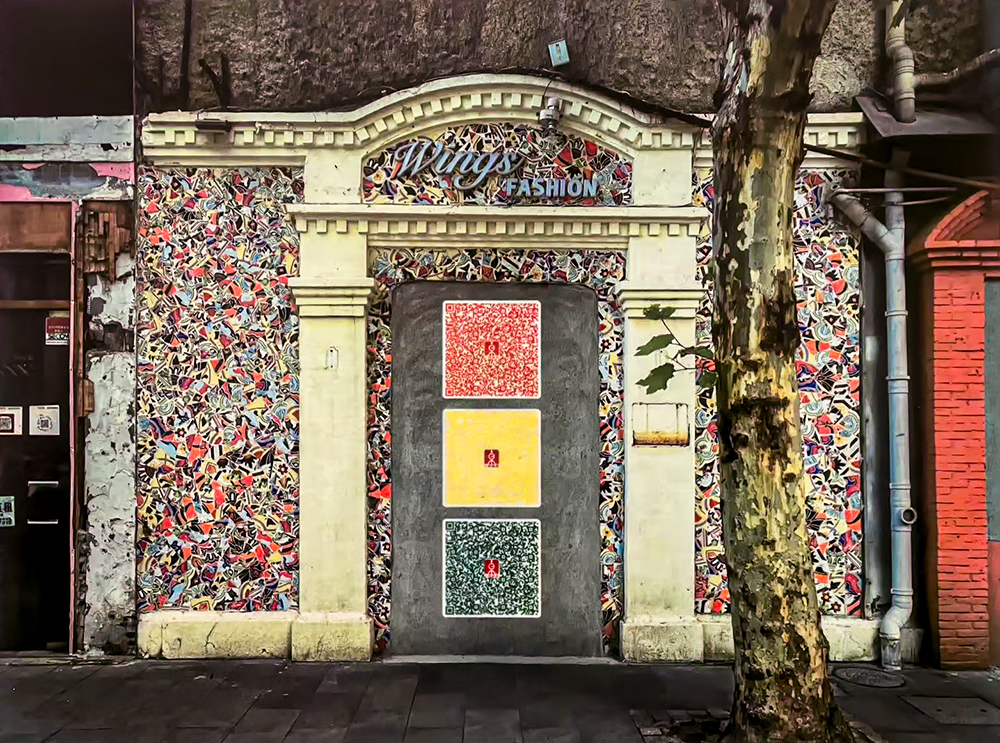
2022 Four Color Carbon Transfer Printing Process for 'Flowers Falling'
Yao Lu (1967-) combines traditional painting elements such as composition, lines, and density with contemporary social reality to create images that are both realistic and unreal, revealing the material changes in the process of modernization, expressing concern for environmental protection, and yearning for social harmony.

Dwelling in Fuchun Mountain, 2008
Jiang Shu (1967-) integrated traditional landscape aesthetics with surrealist style and created a unique art form through AI image generation technology. Not only does it demonstrate the potential of AI in artistic exploration, but it also provides the possibility to reconstruct new landscapes across cultural boundaries.
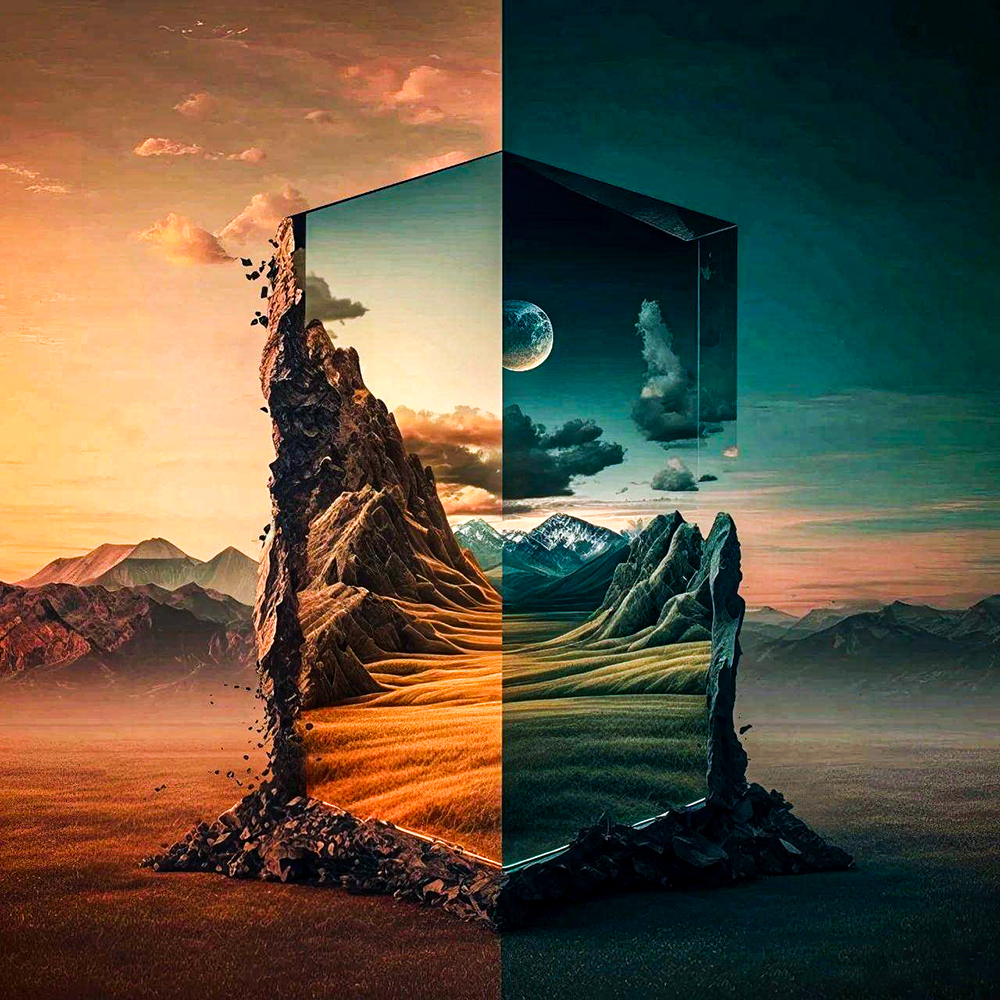
Impossible Scenery "2024
Ma Liang (1972-) transforms his thoughts and insights into concrete images, creating a unique visual language to express his views on the world and reflect on current issues, thereby resonating with viewers.
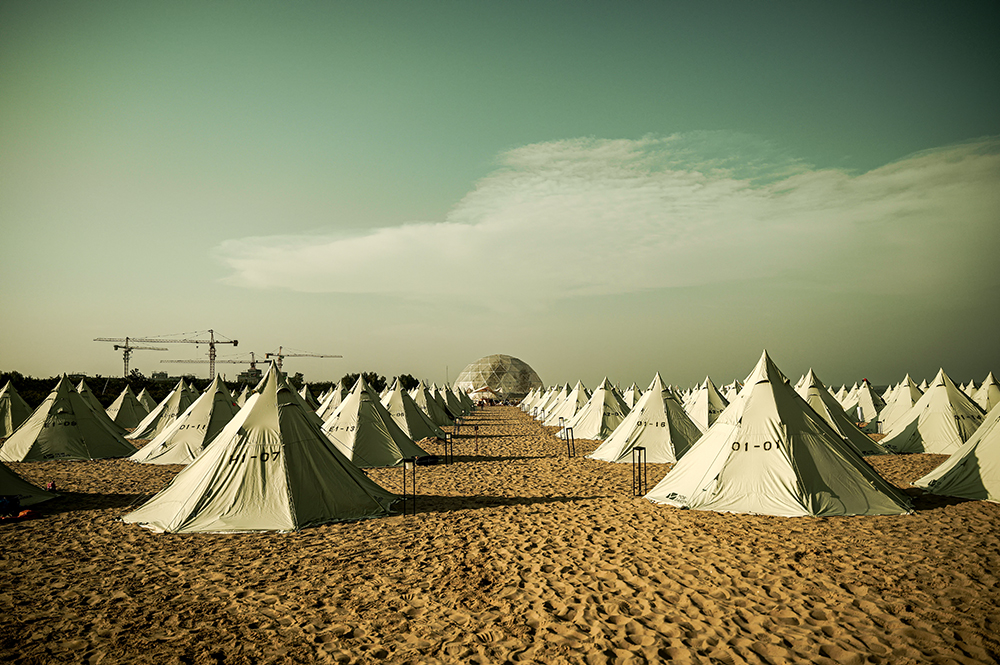
Will the World Be Good? 2023
Zhu Feng (1974-) deliberately left referenceable "anchor points" in multiple images, presenting two states of the same space in the past and present, with huge differences that make viewers feel the surging power of urbanization process.

Shanghai Zero Degree "from 2004 to present
Chi Saiyi (1978-) creates Zen inspired images rich in traditional cultural atmosphere through her understanding and exploration of Eastern blue, using profound artistic conception and abstract expression to guide people to pursue a peaceful world in their hearts.
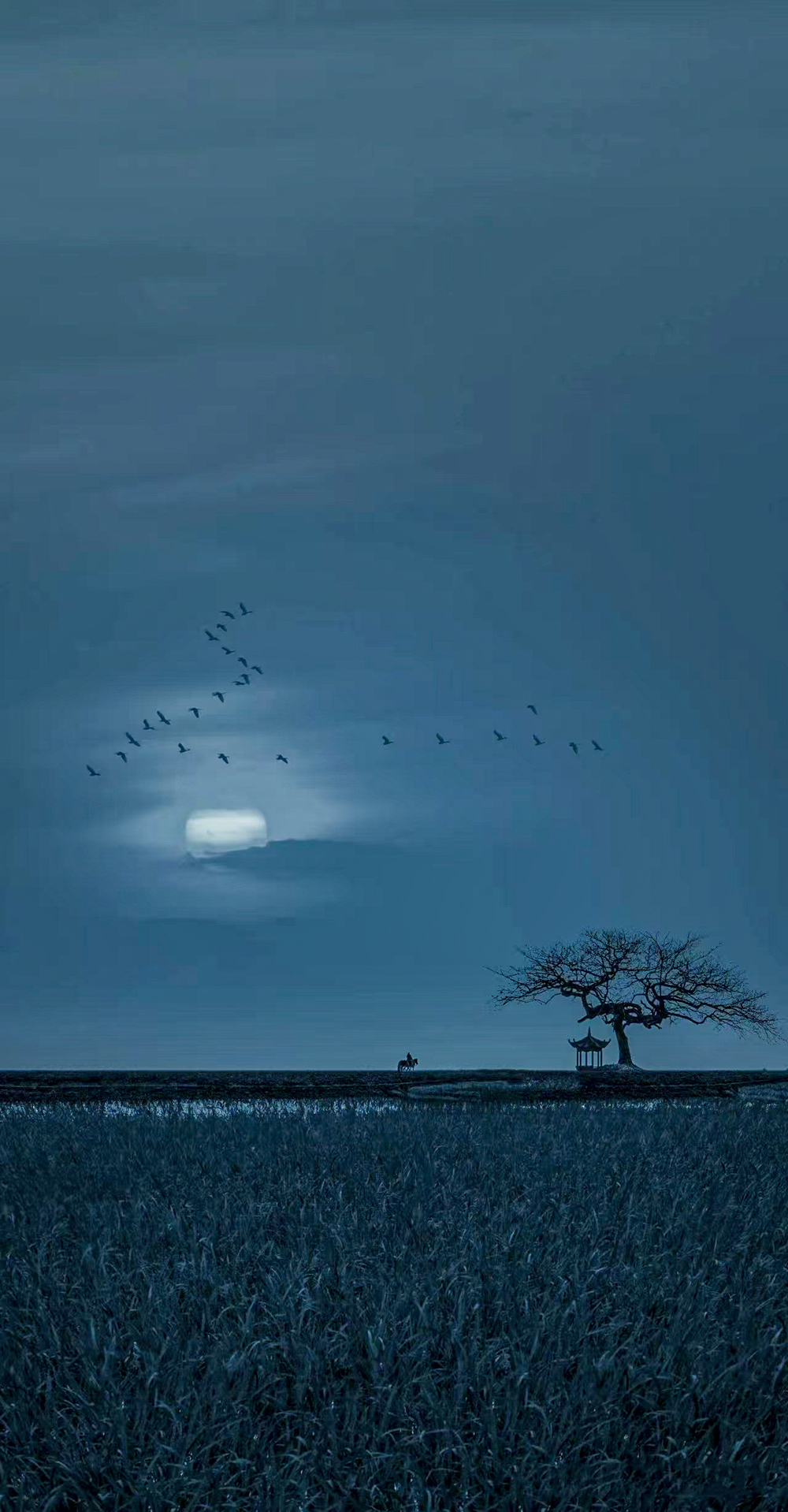
Thirteen Unique States of Shadow (2022)
Xu Dan (b. 1980)-By abandoning the representational function of traditional photography, Xu Dan reveals the unique charm of cameraless photography. Shifting her creative focus to capturing the physical properties and traces of natural elements, she unveils the spiritual essence and "thingness" of the scenery.
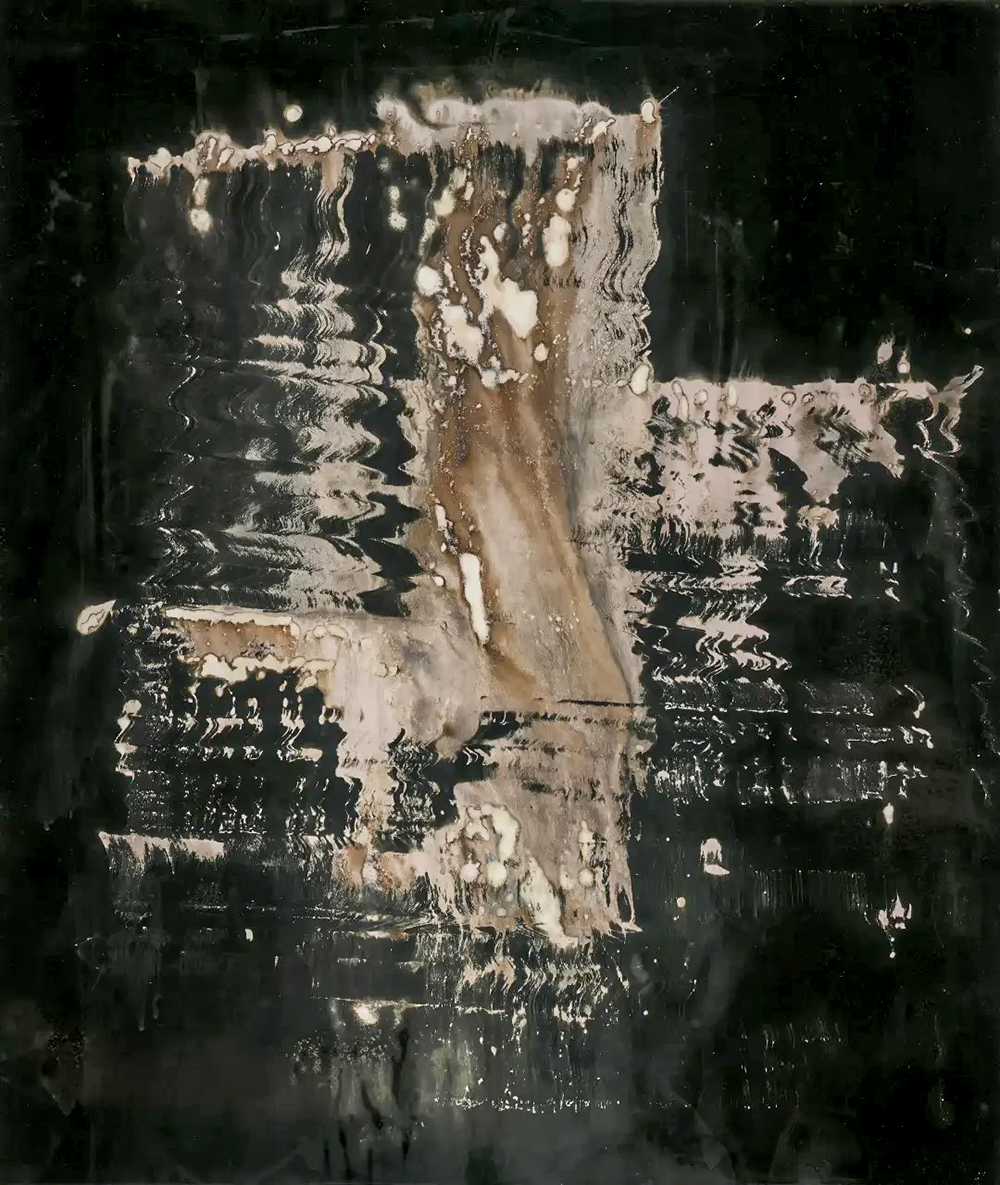
Nothing Beyond (2024)
Yu Yue (b. 1987)-Through methods of deconstruction and reconstruction, Yu Yue establishes a new celestial system, presenting landscapes in states of "interbeing" and "interdissolution." This serves to illustrate his philosophy that the mutual promotion of philosophy and science will continuously refine human understanding.
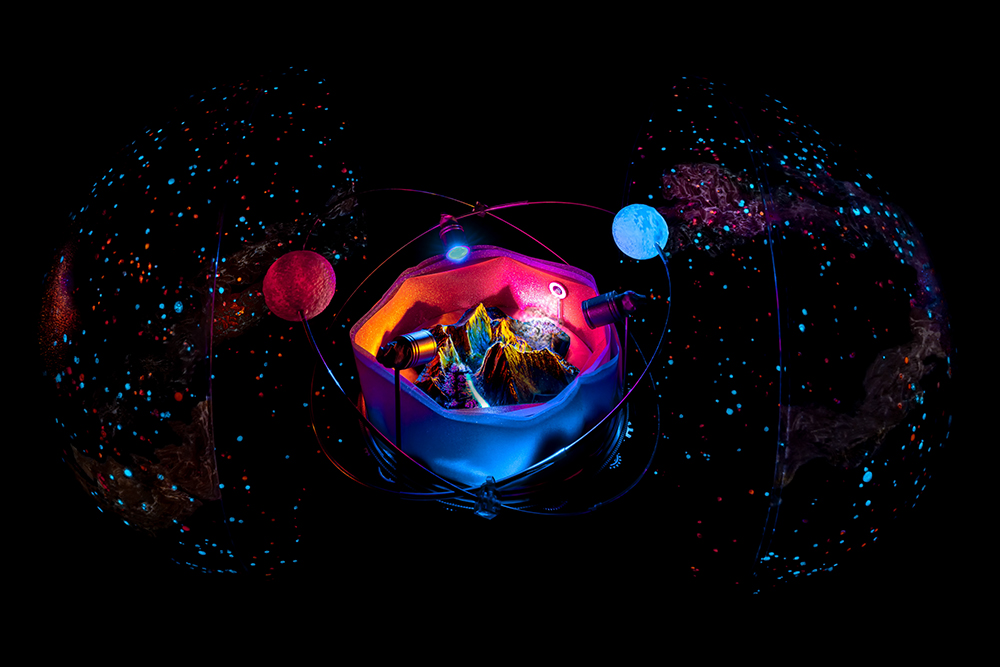
Being and Non-being Beget Each Other (2023)
Chen Xi (b. 1989)-Employing photographic collage techniques and integrating the concept of a "cutaway perspective," Chen Xi merges interior and exterior views. She meticulously reconstructs three-dimensional space within a two-dimensional image, pushing the boundaries of architectural photography and fostering public understanding and dissemination of architectural concepts.
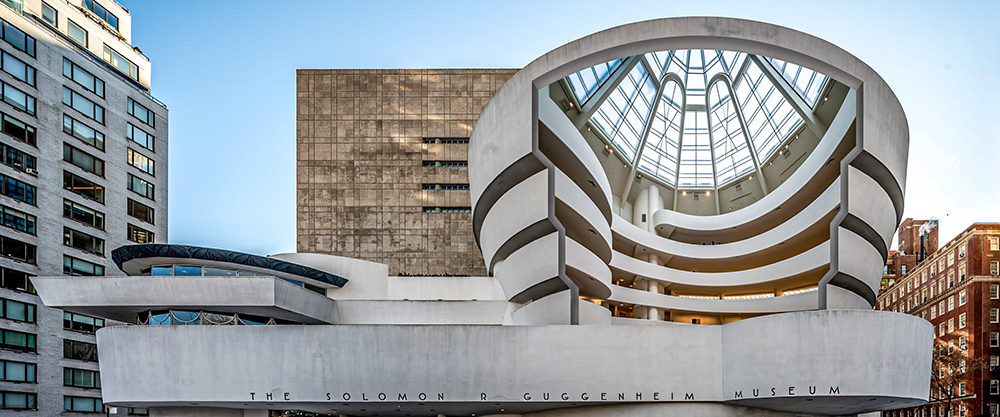
Interior Elevation (2022)
Hou Shuai (b. 1990)-Hou Shuai presents a virtual, artificial landscape that prompts viewers to reflect on the relationship between the virtual and the real. While it can offer stimulating sensory experiences, his work also urges vigilance towards the potential conflicts and contradictions lurking beneath such fabricated realities.
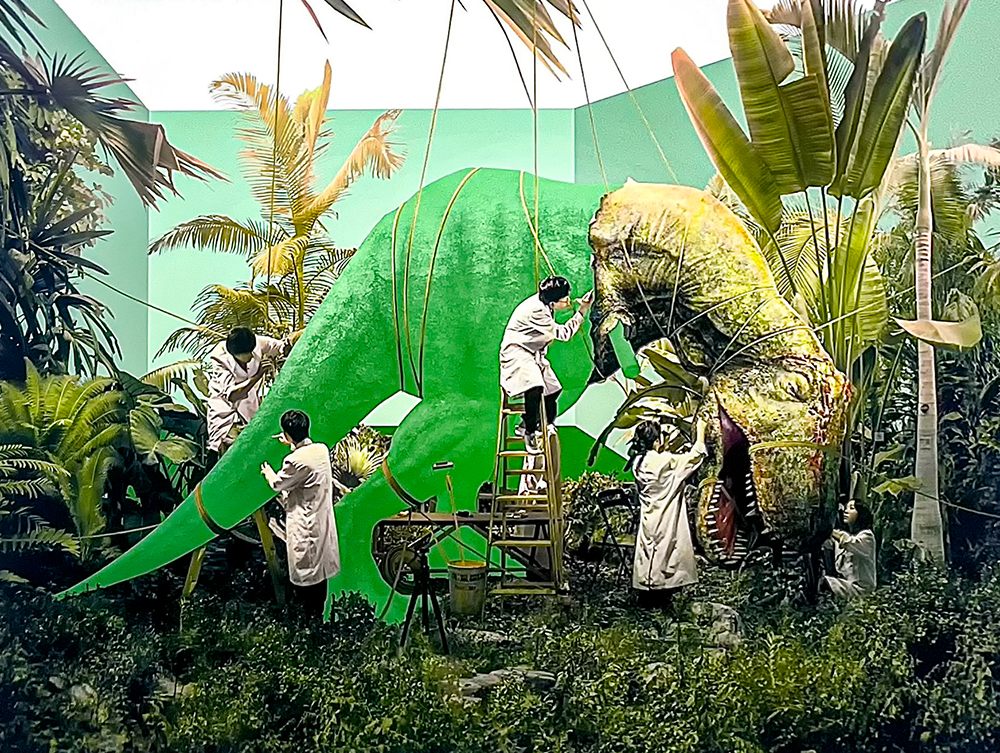
Dinosaur (2023)
Guo Jiasi (b. 1993)-Guo Jiasi translates her understanding and perception of natural landscapes into artistic expression through the form of a book, achieving a perfect fusion of image and space. She creates a three-dimensional, multi-layered reading experience that guides the reader to contemplate the relationship between humanity and nature, as well as the impact of human activity on the environment.

Record of the Spirit Mountain (2021)
Guo Beihua (b. 1998)-Guo Beihua combines historical archive research with on-site photography, projecting historical documents and old photographs onto the locations of ruins. His work reflects the contribution of human-made landscapes to urban development while also highlighting the irreversible environmental damage they often cause.
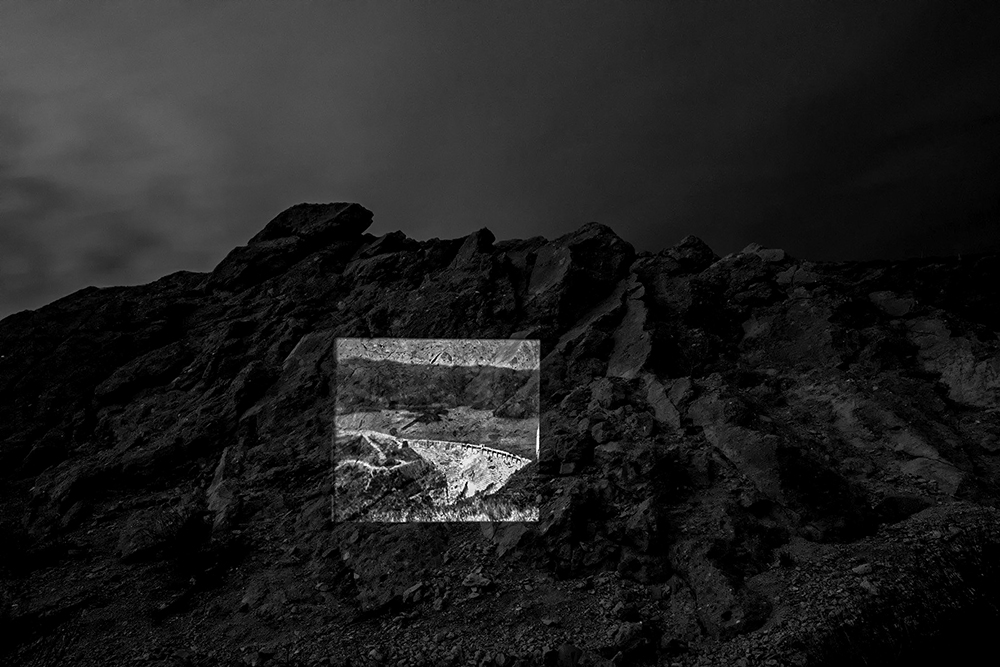
Water Thicker Than Blood - Site of the St. Francis Dam (2022)
© CopyRight 2023 Yu Yue Photocopying Shanghai ICP No. 2023013283




